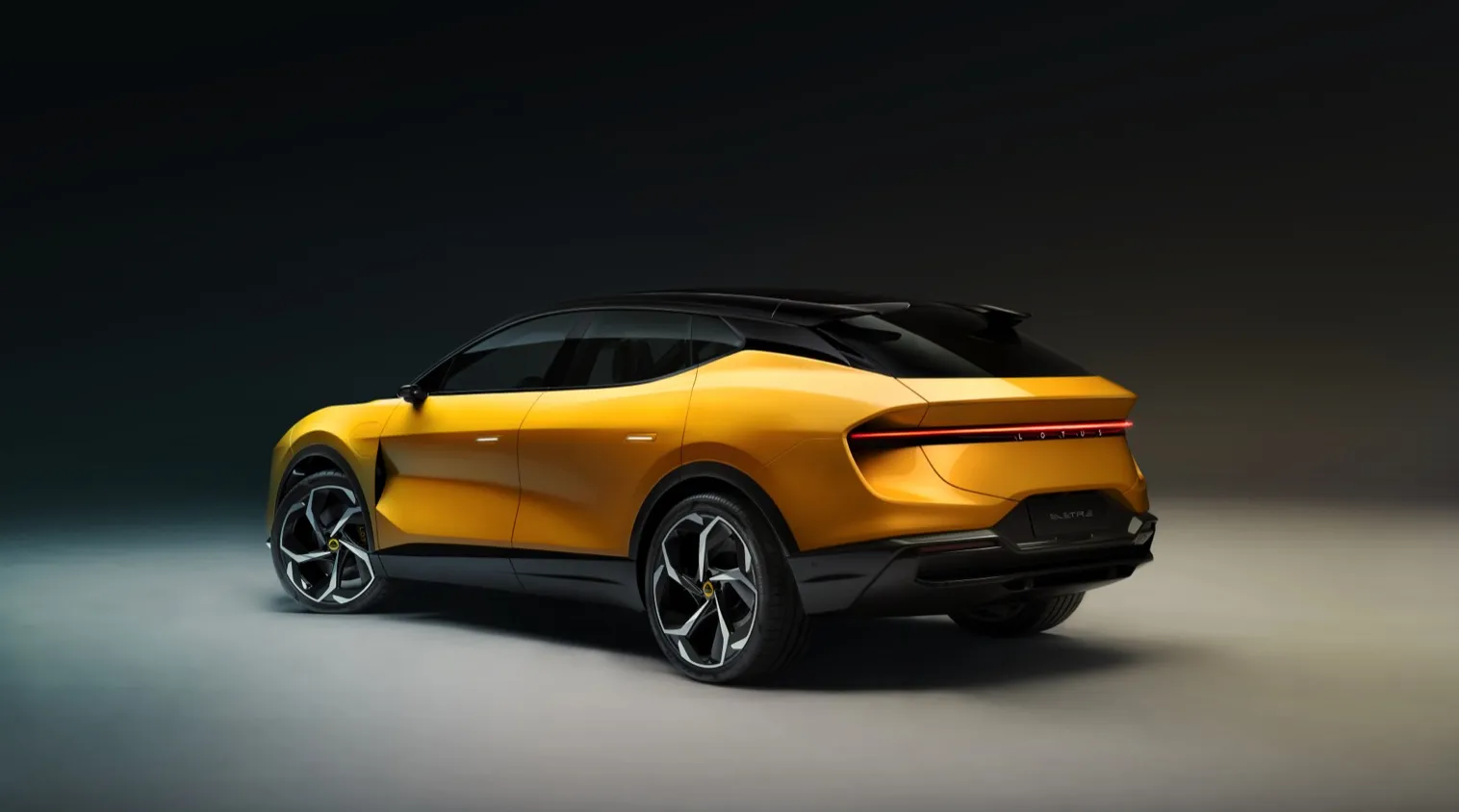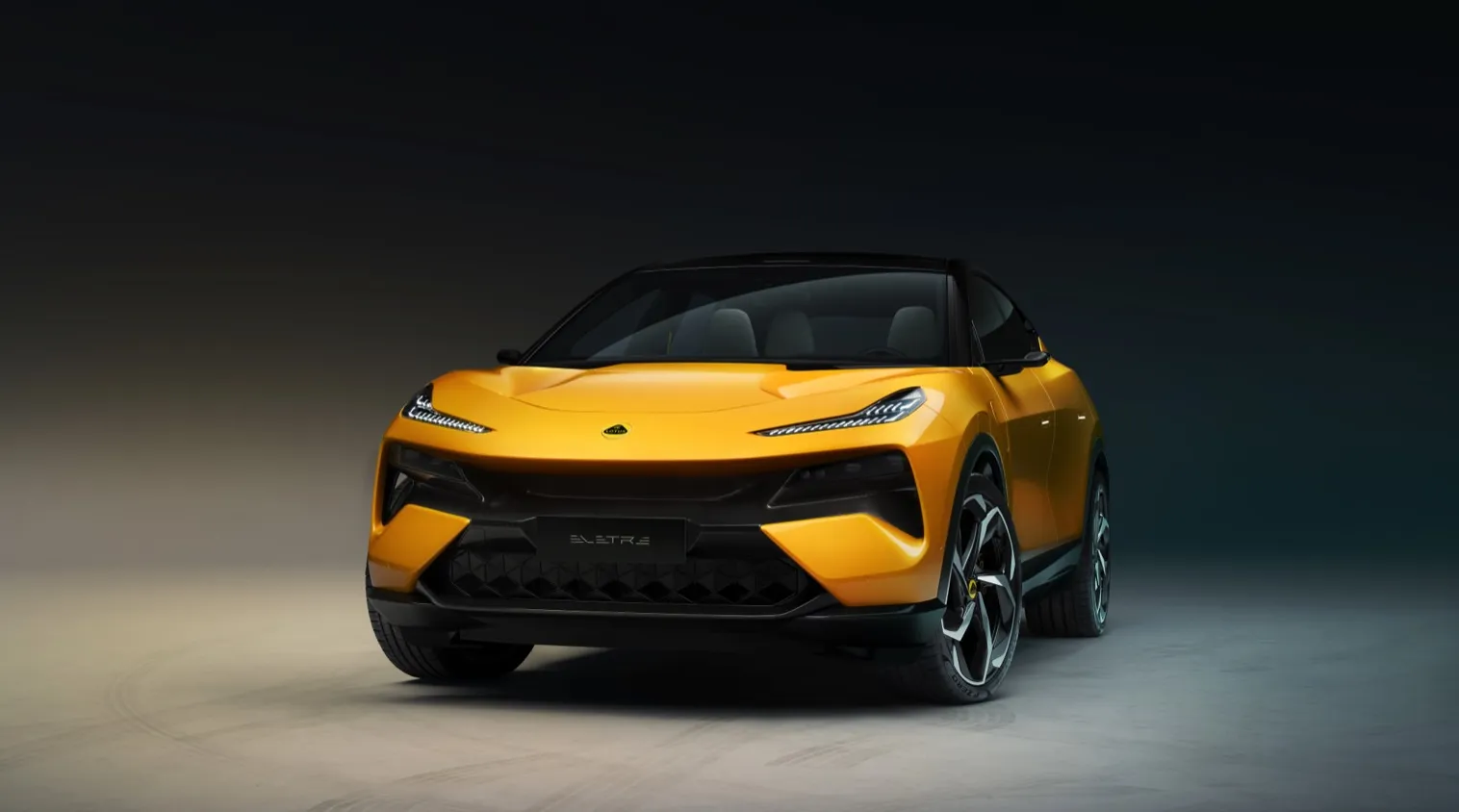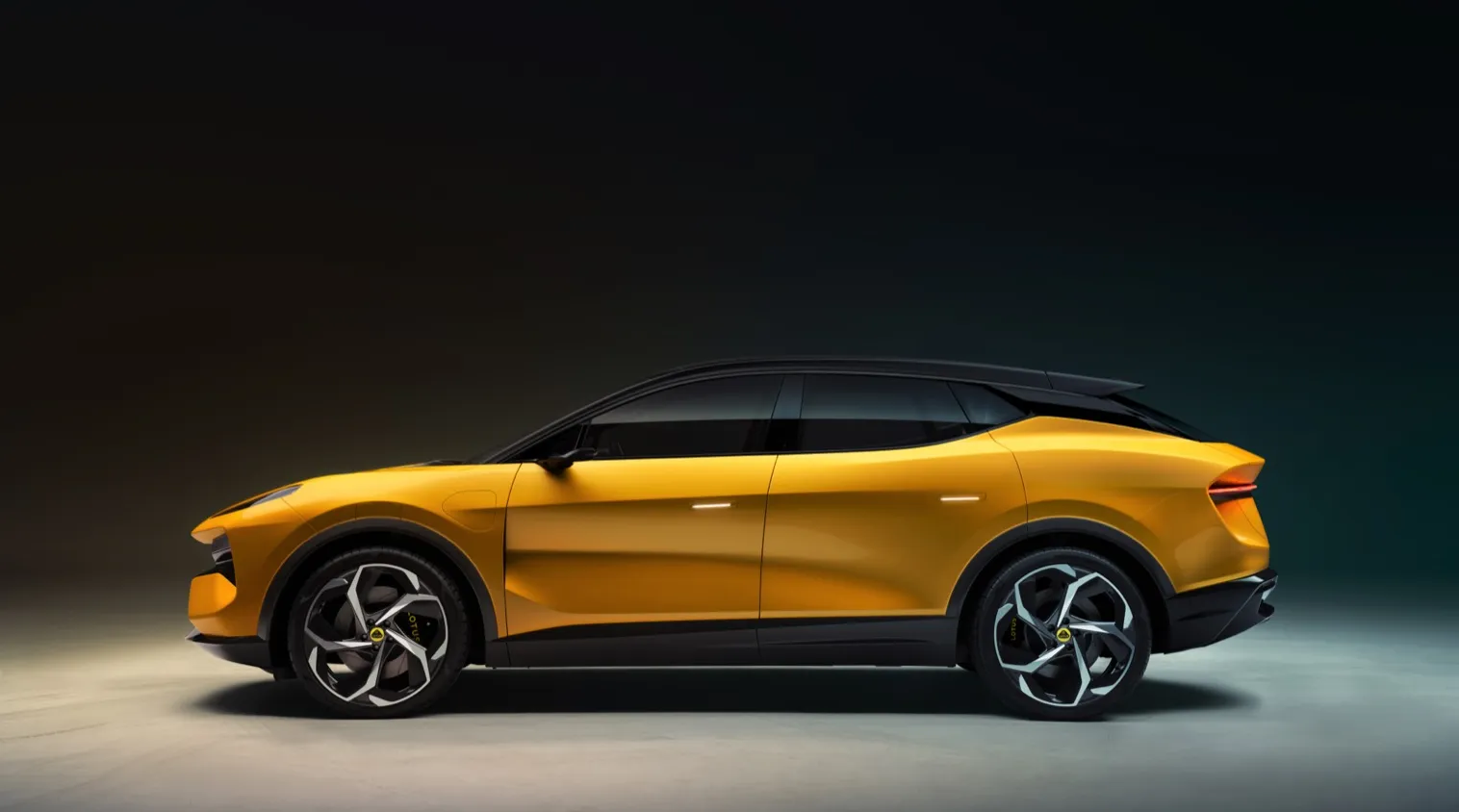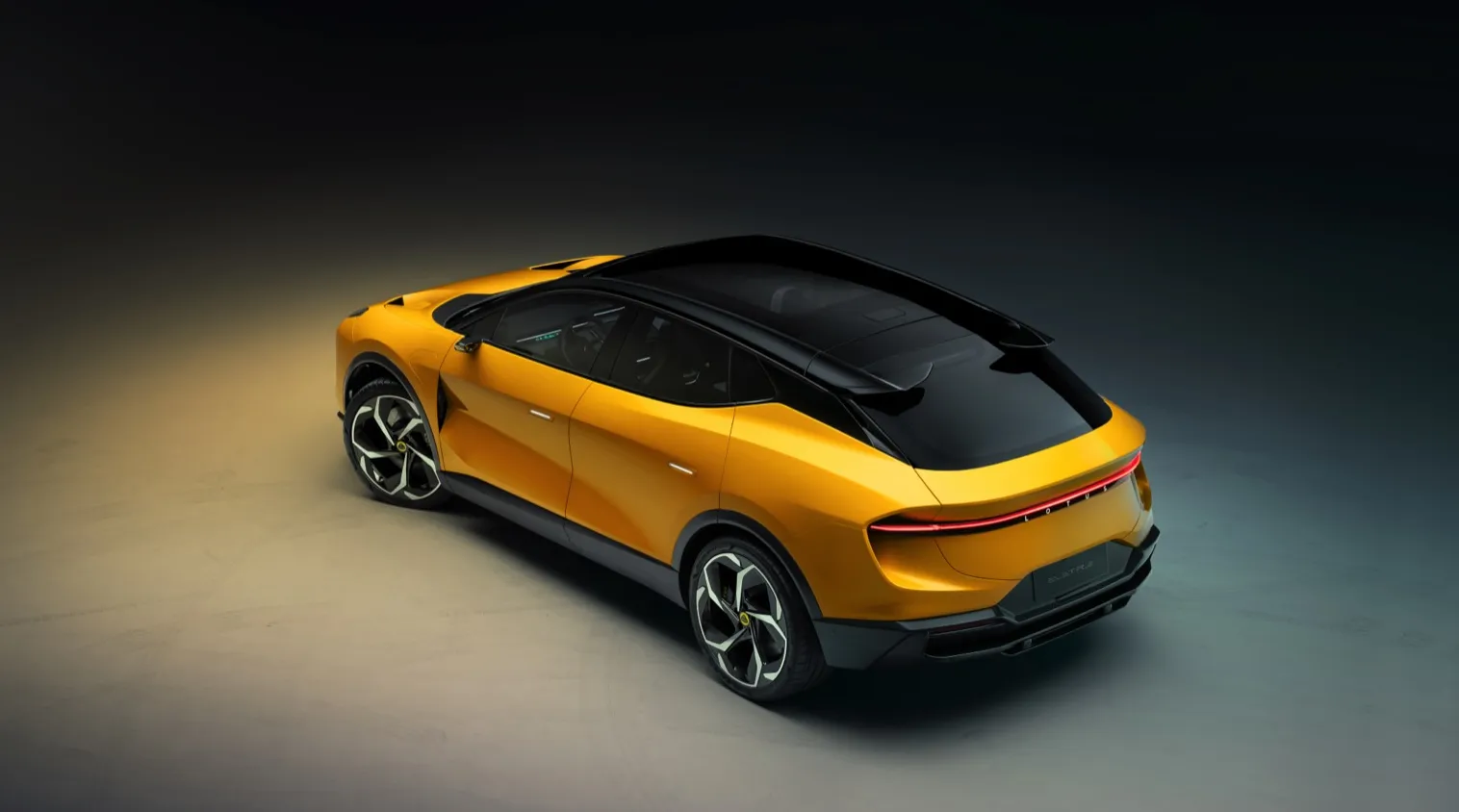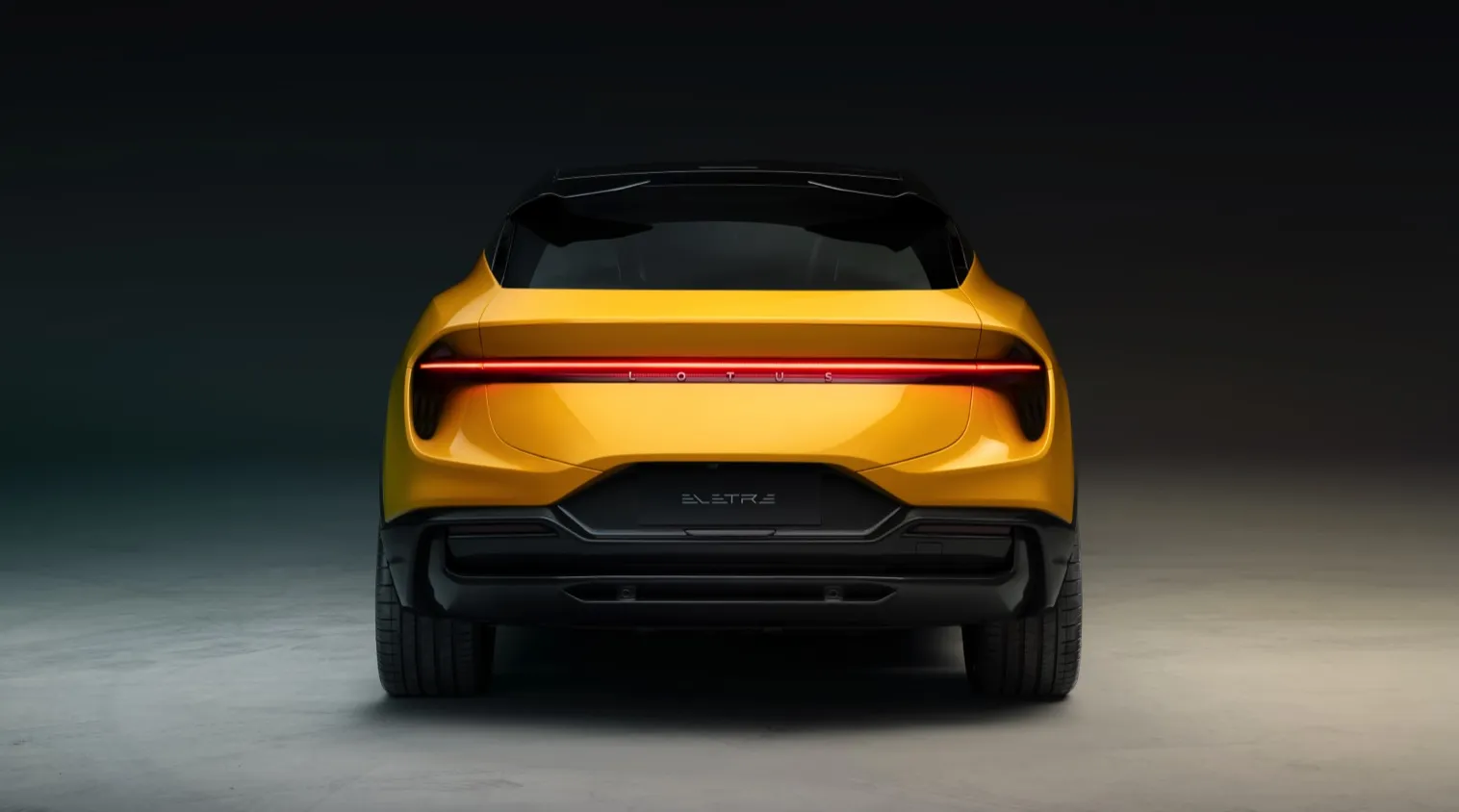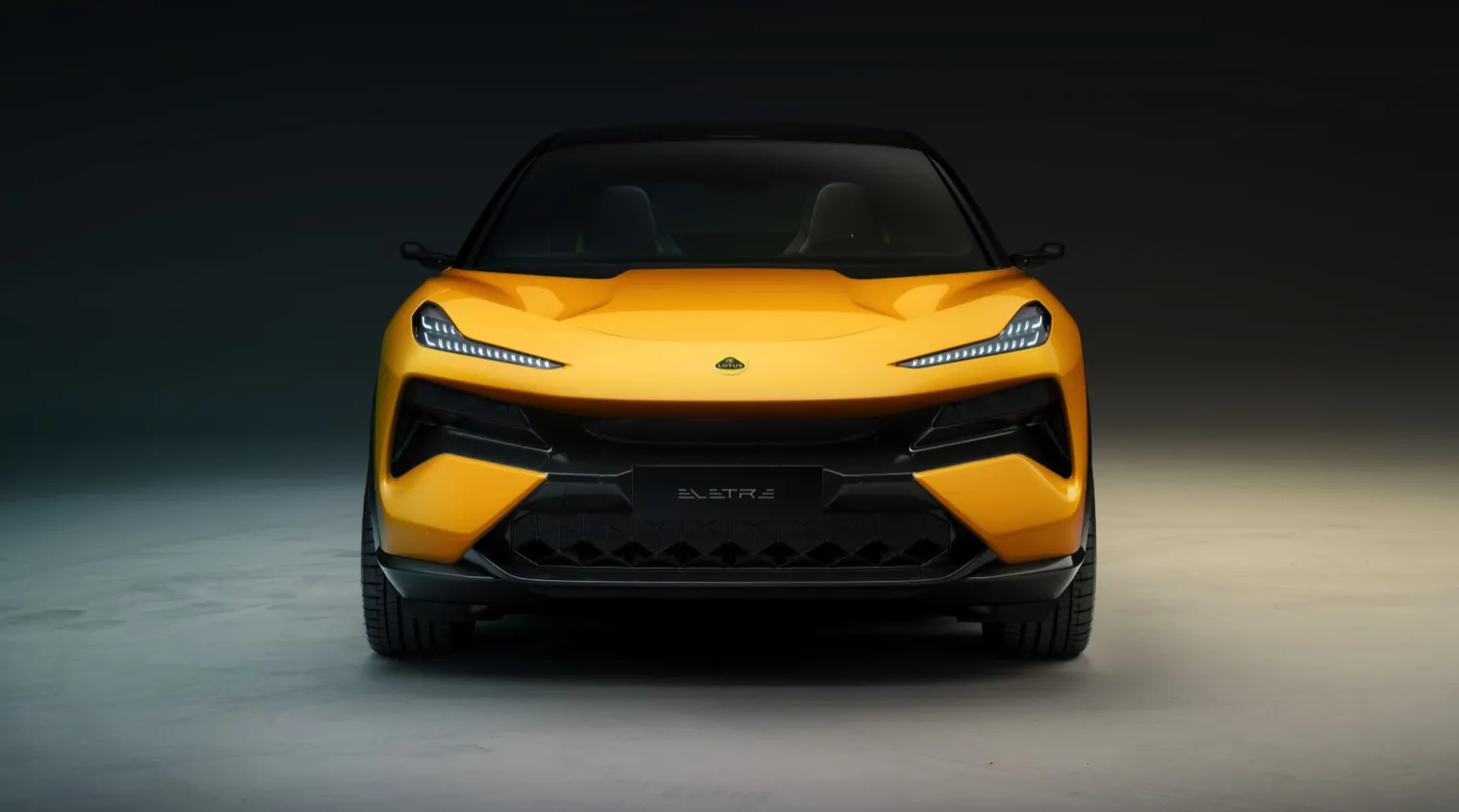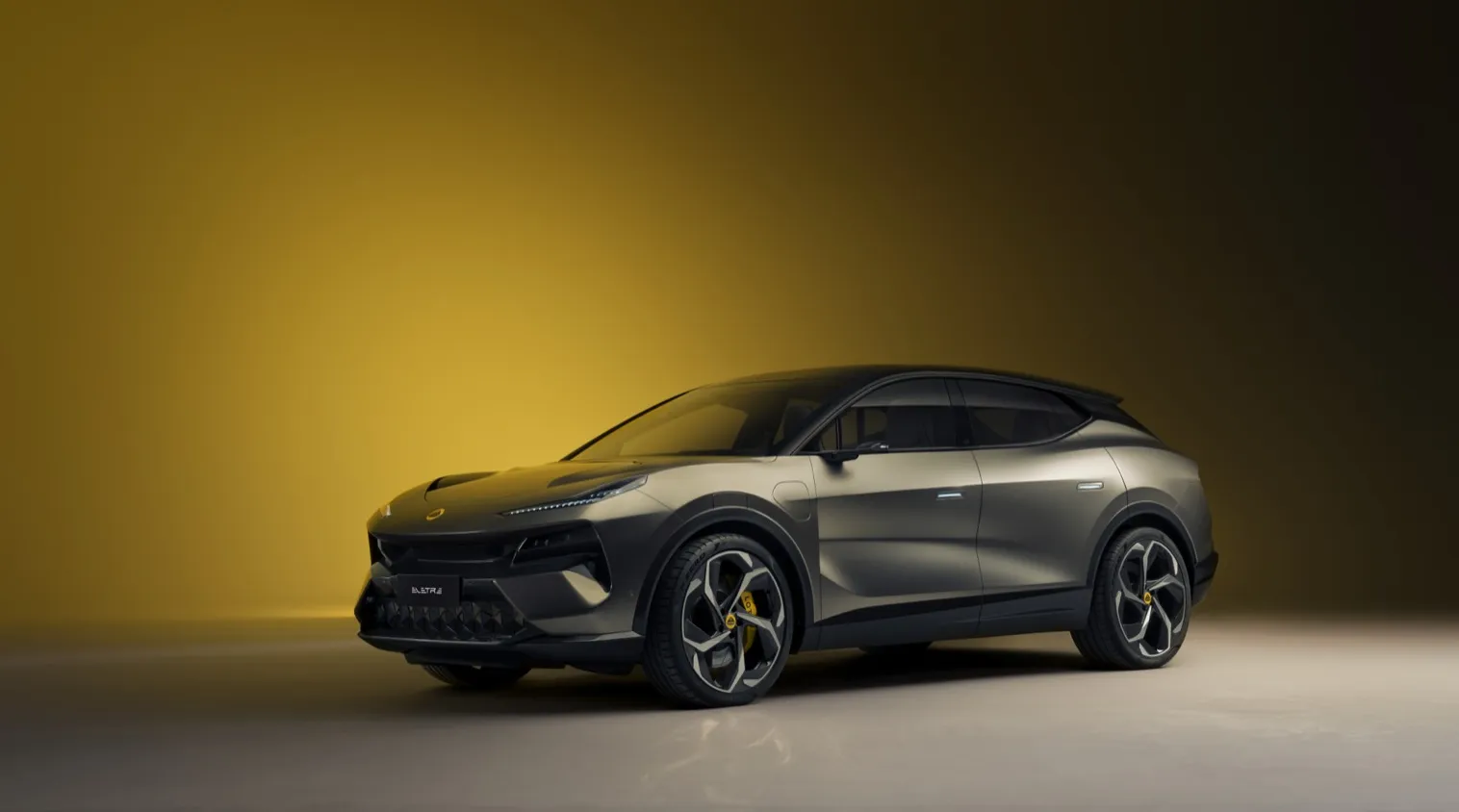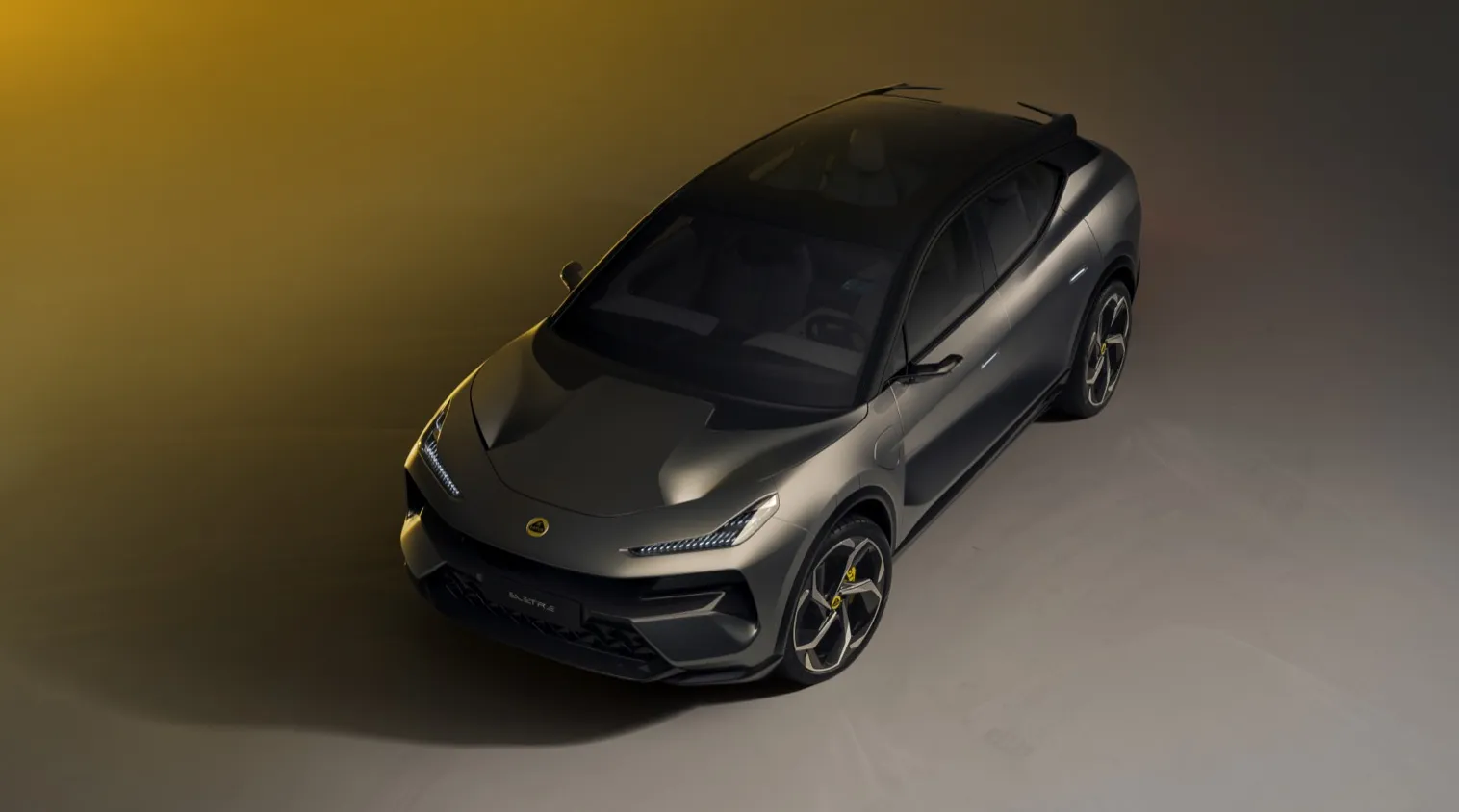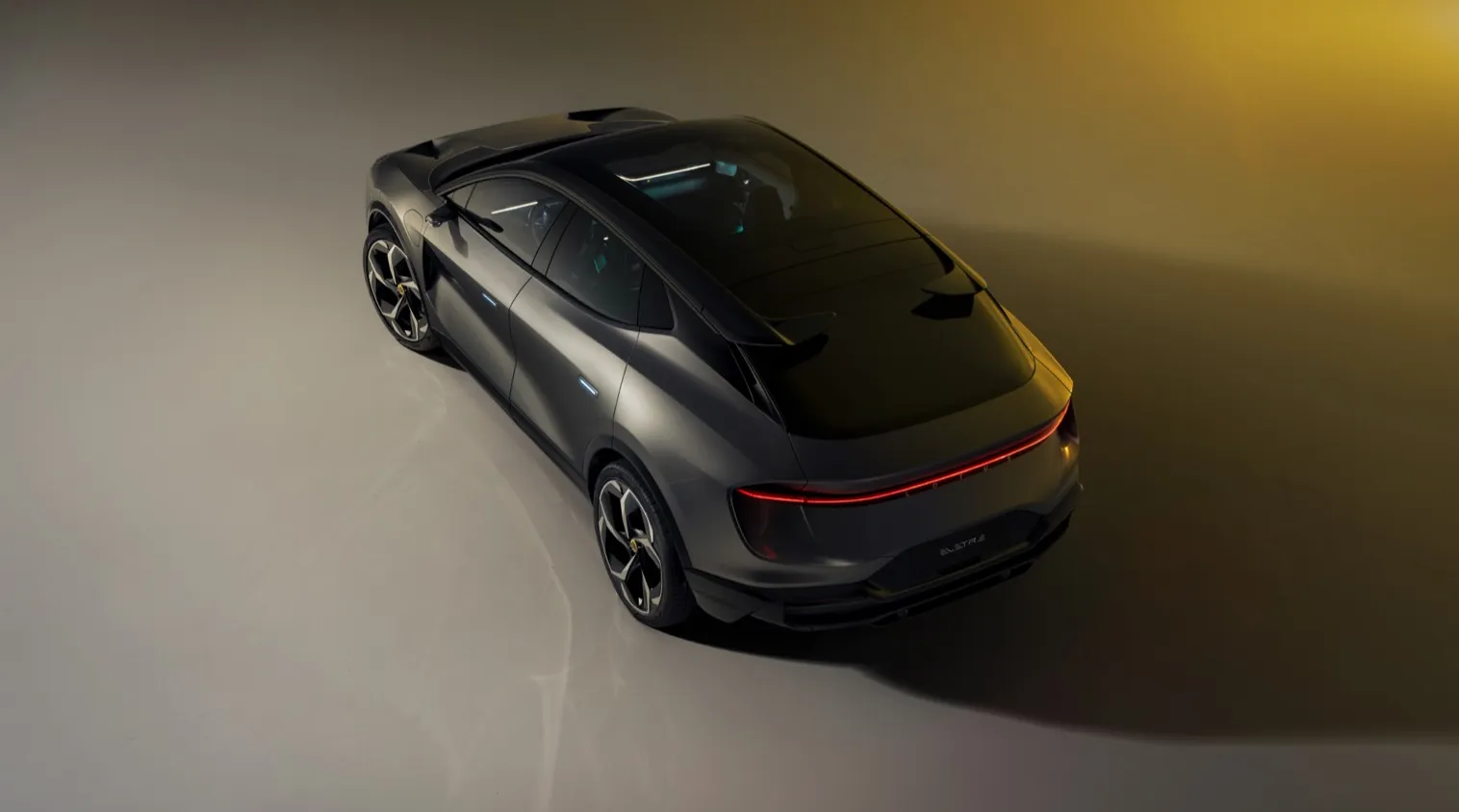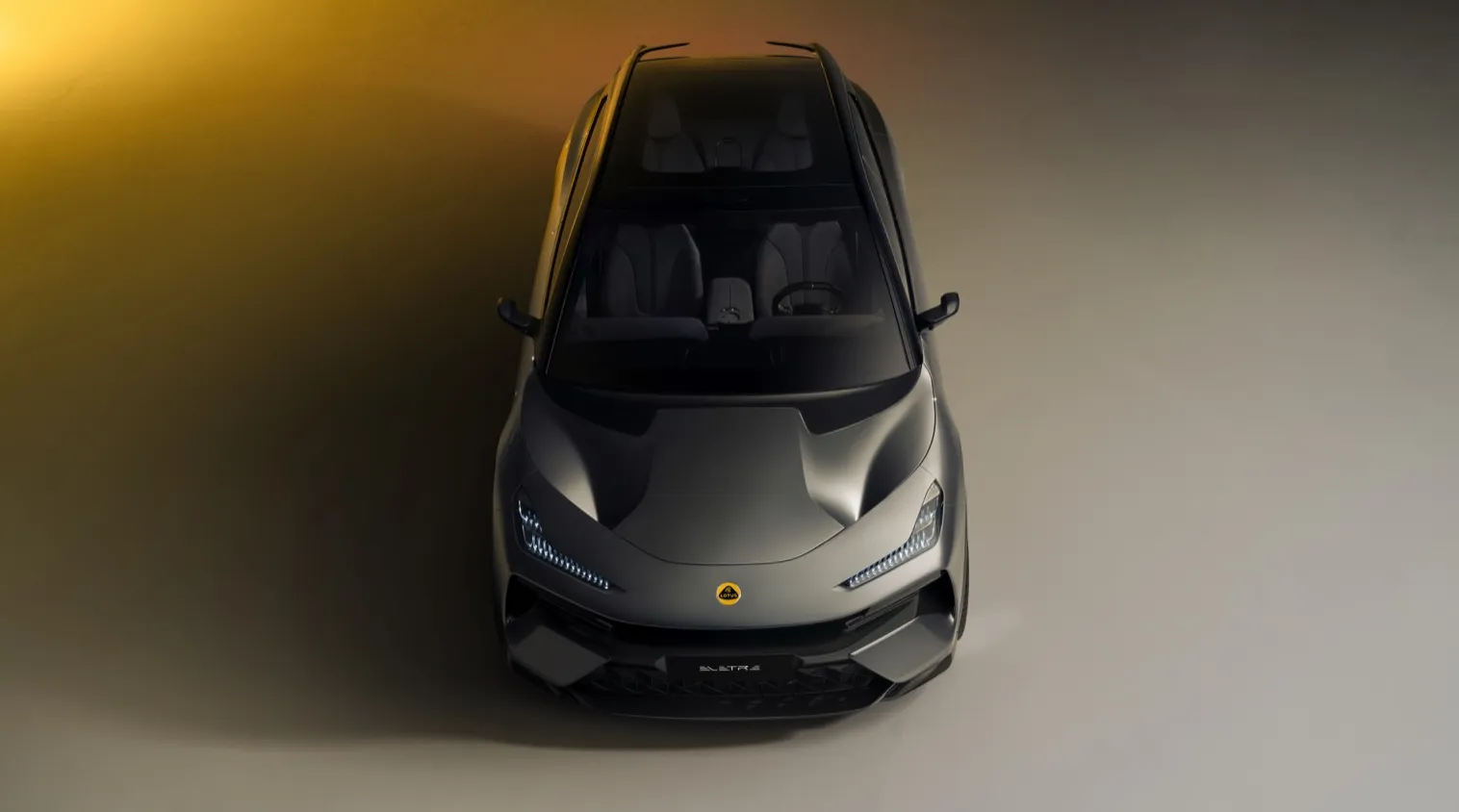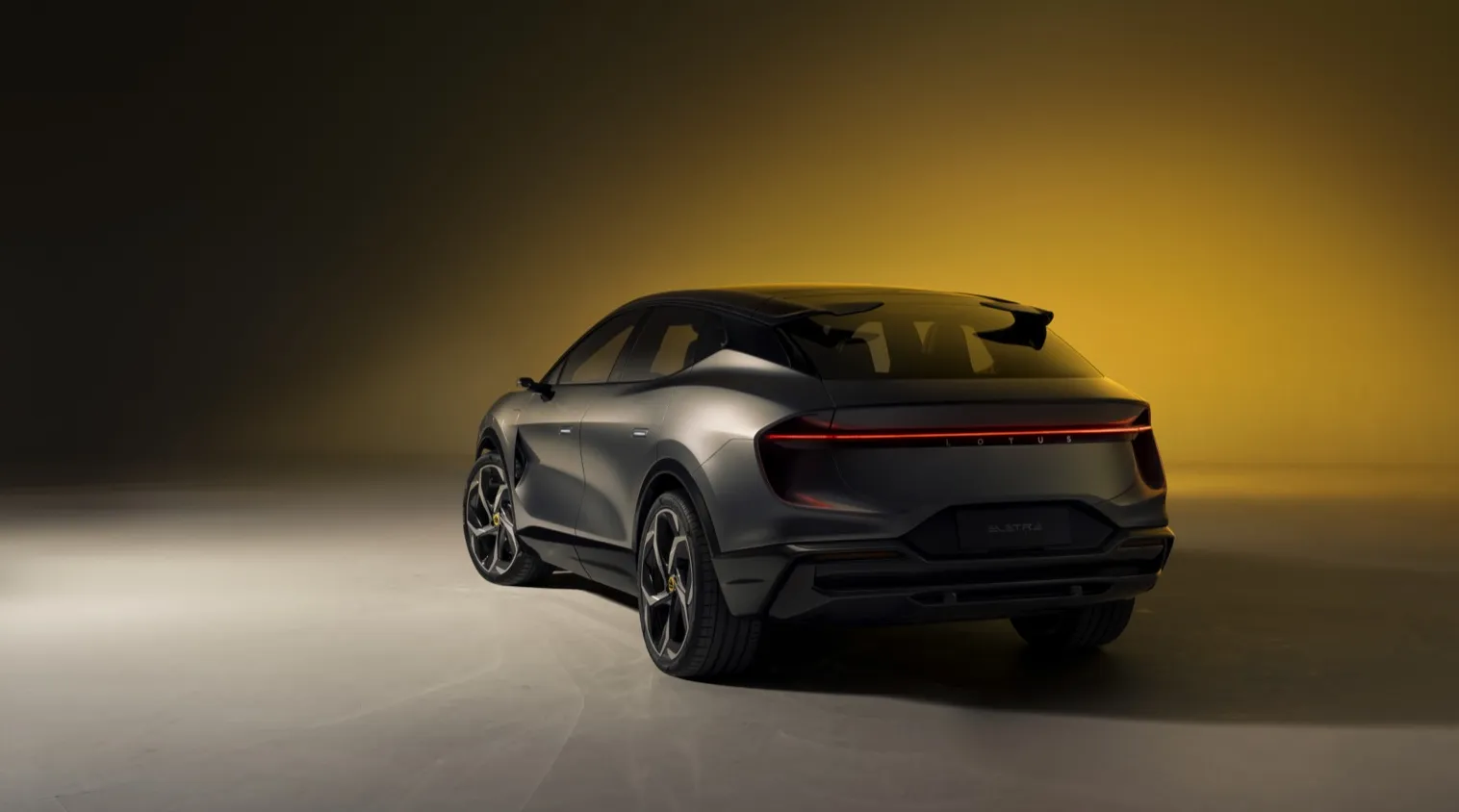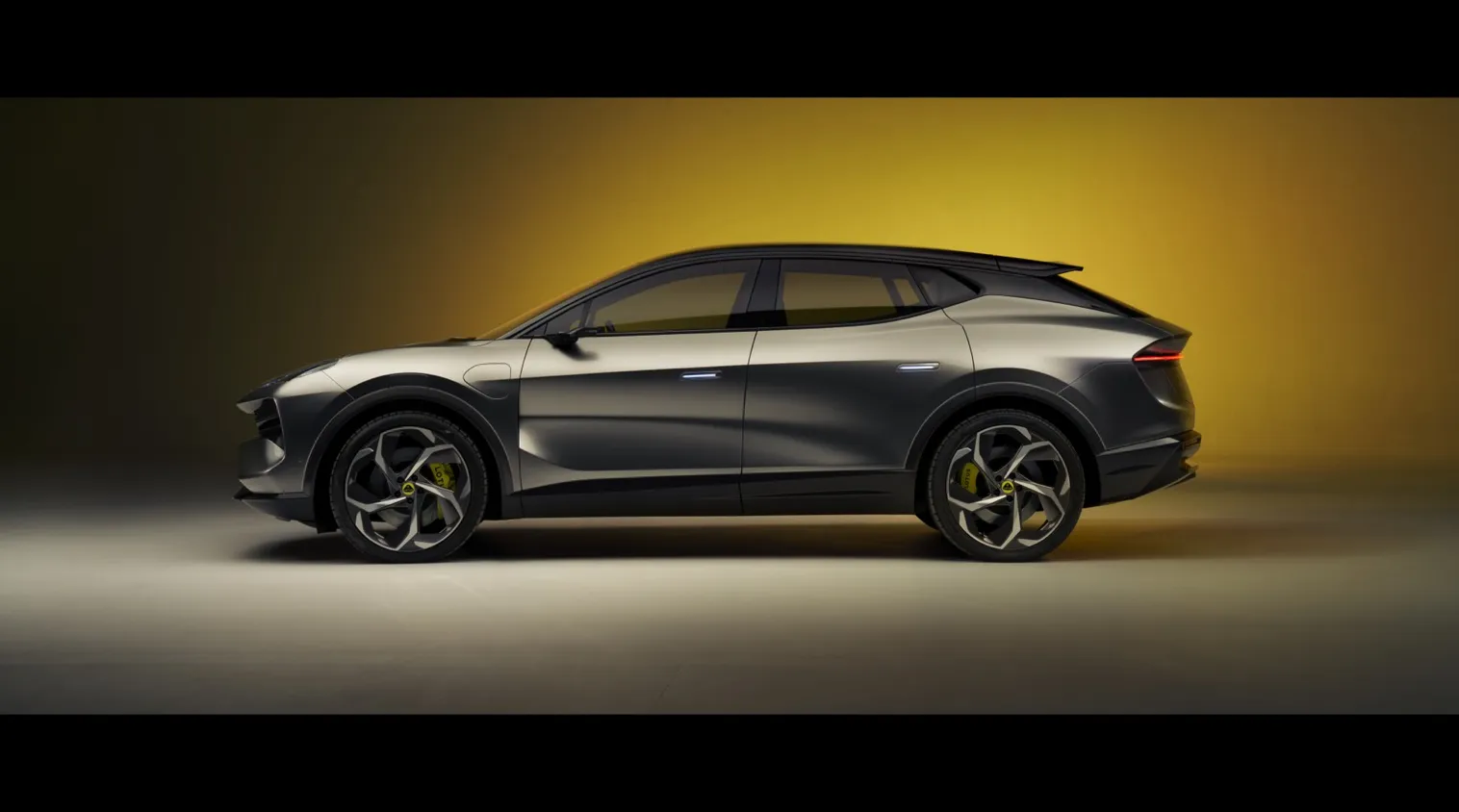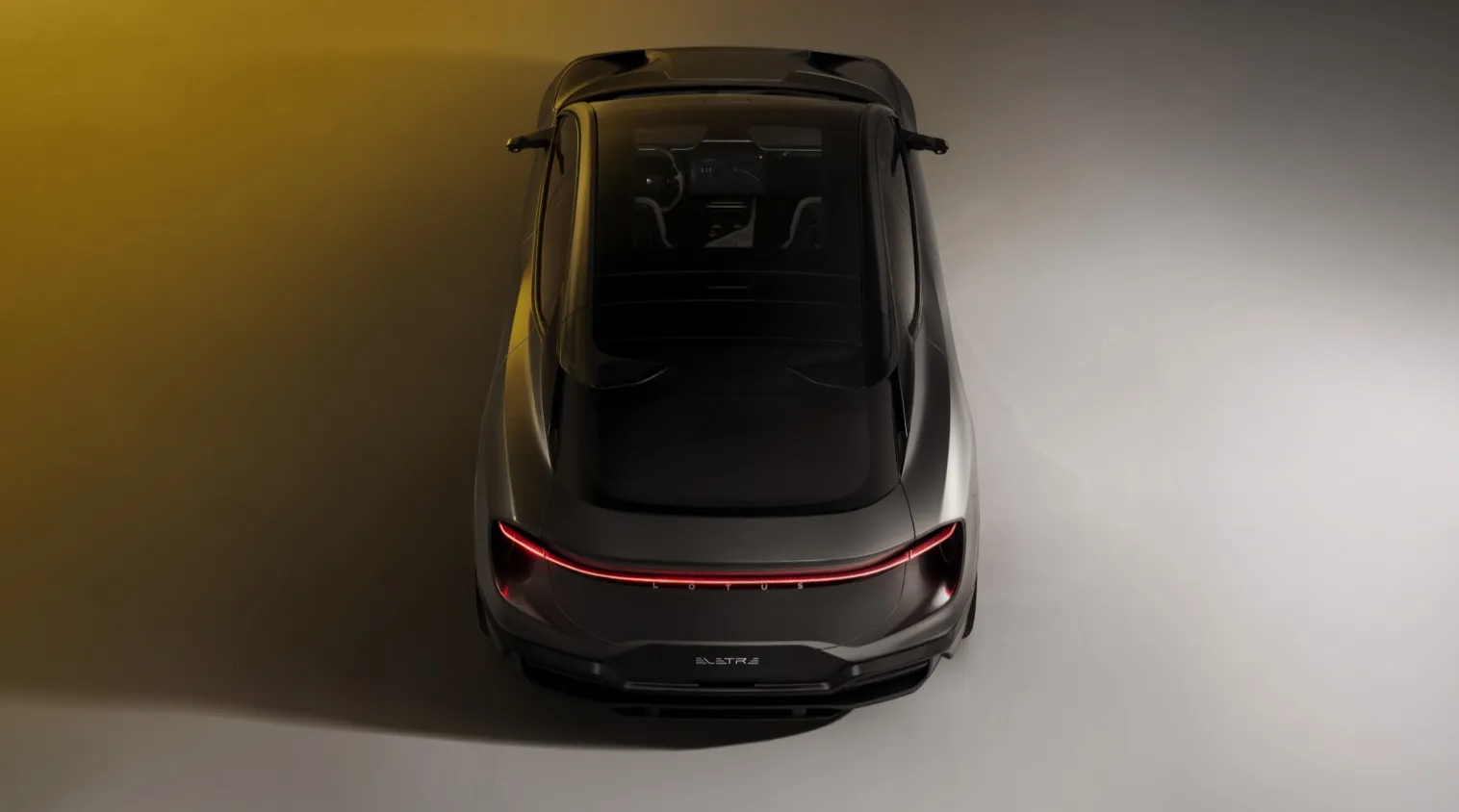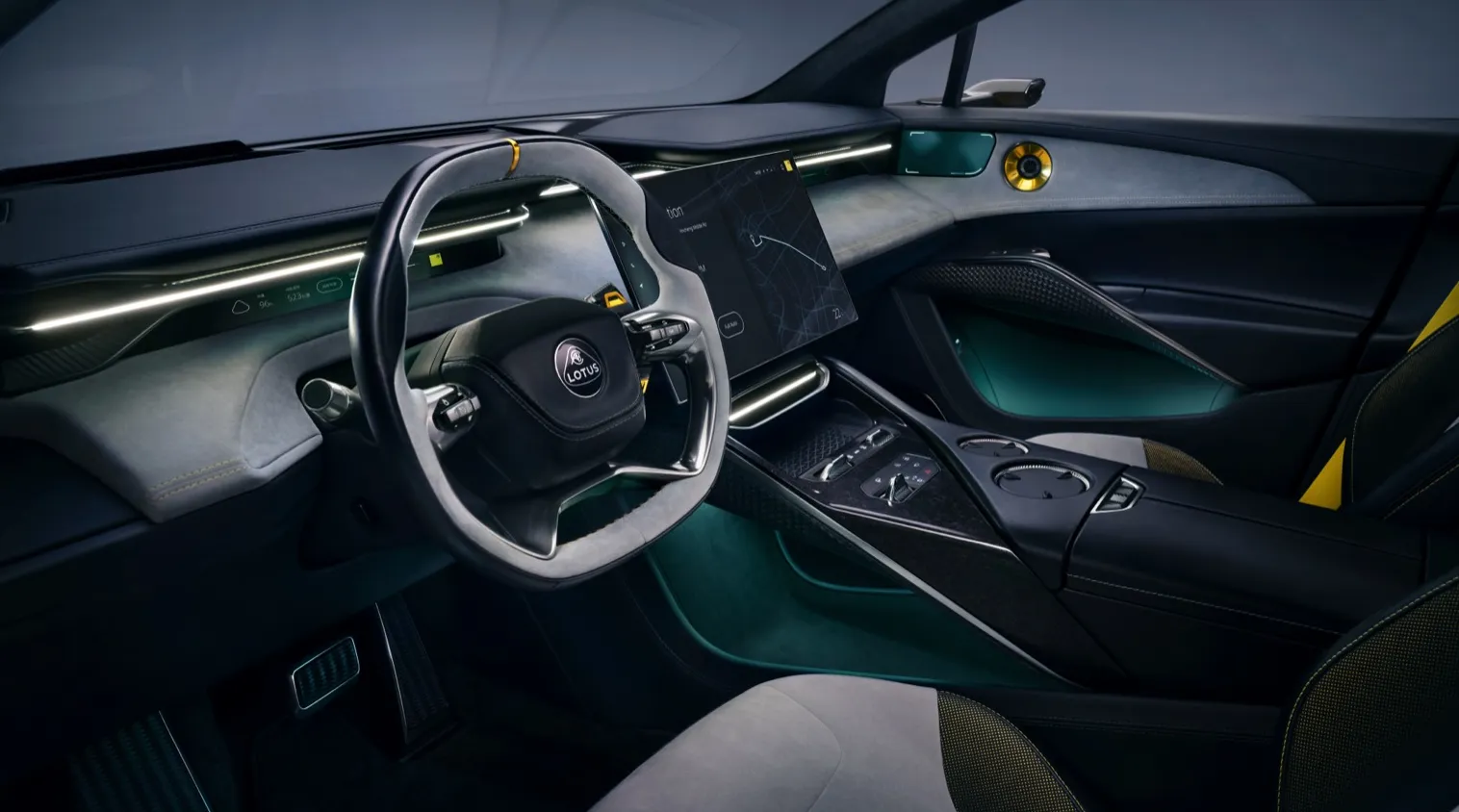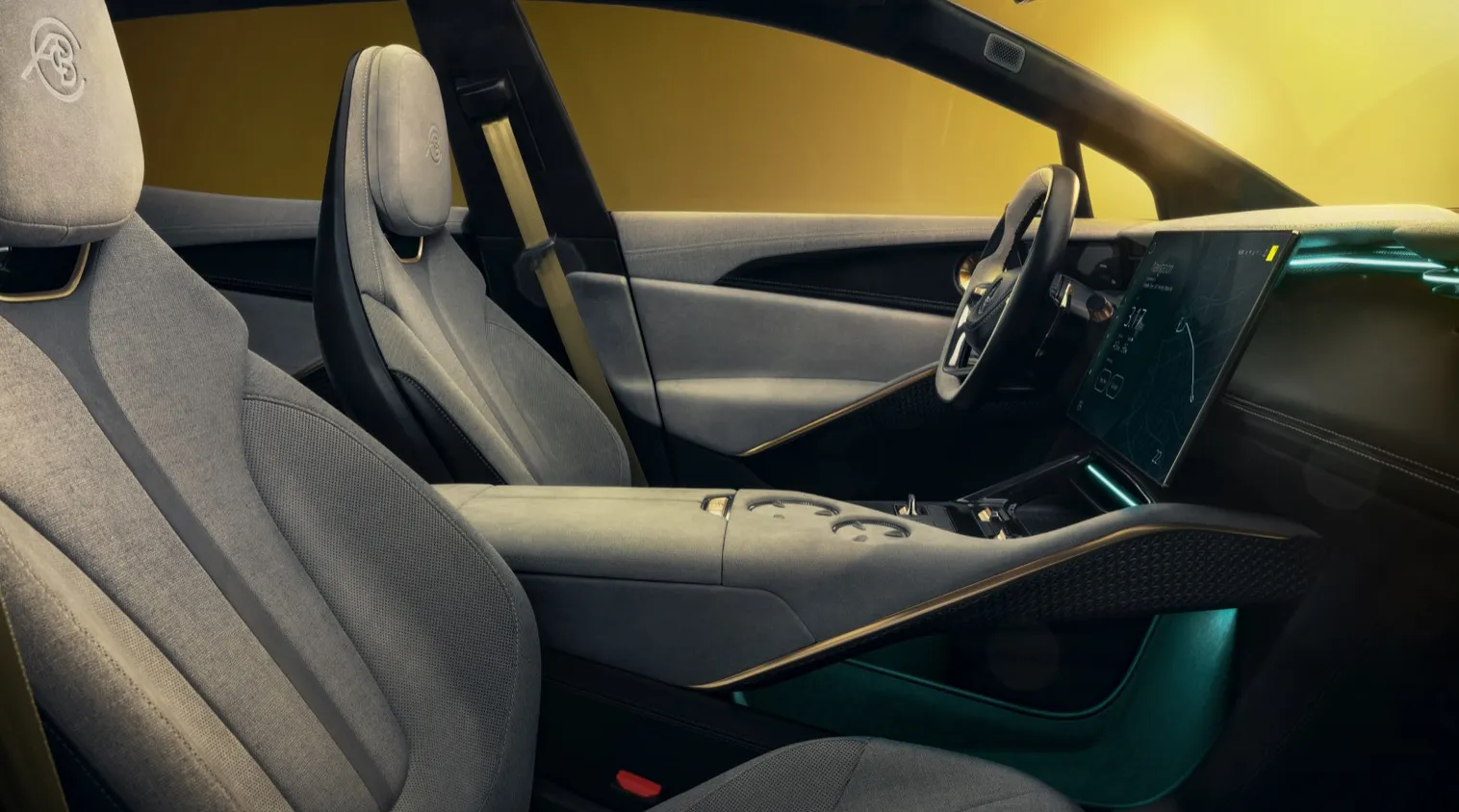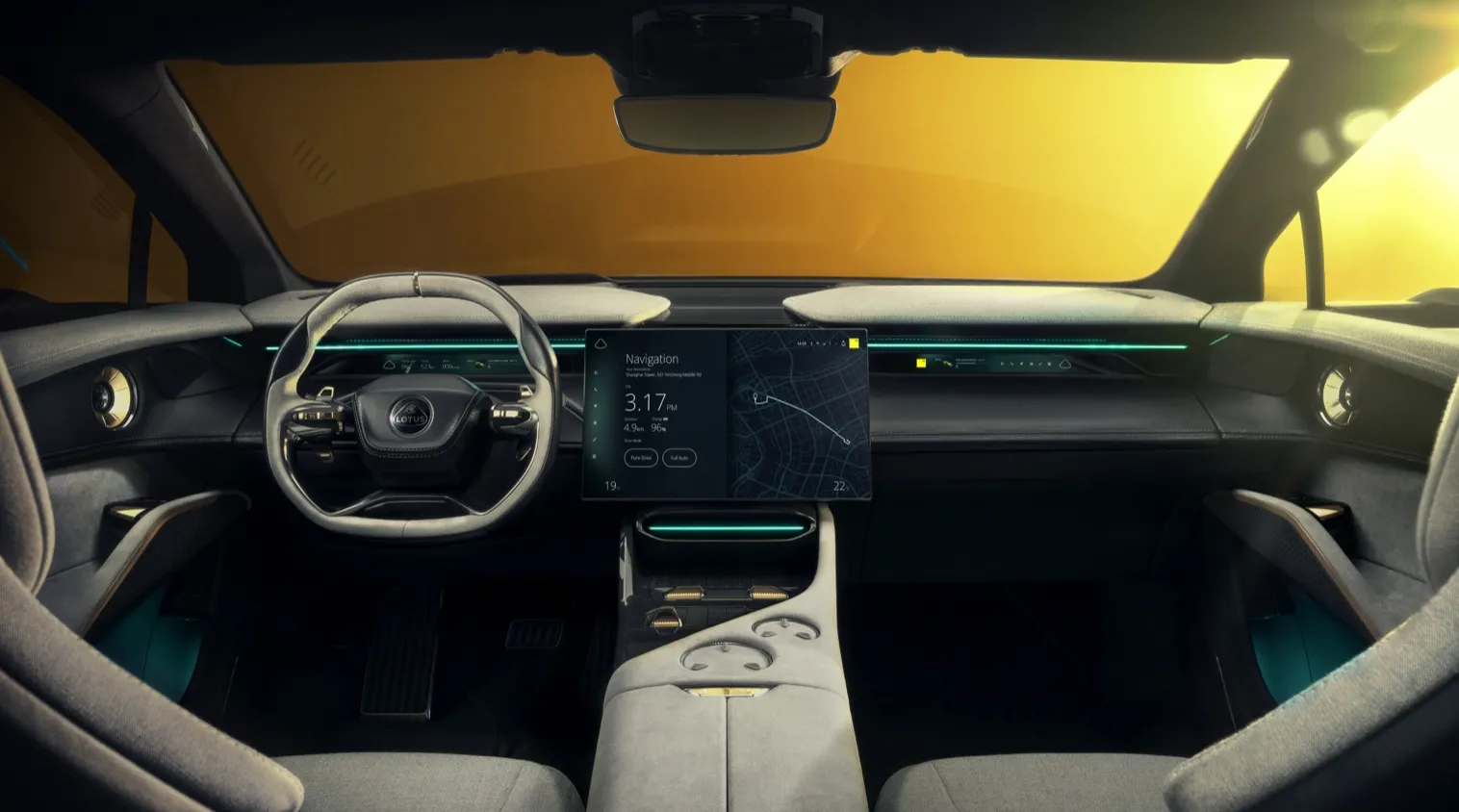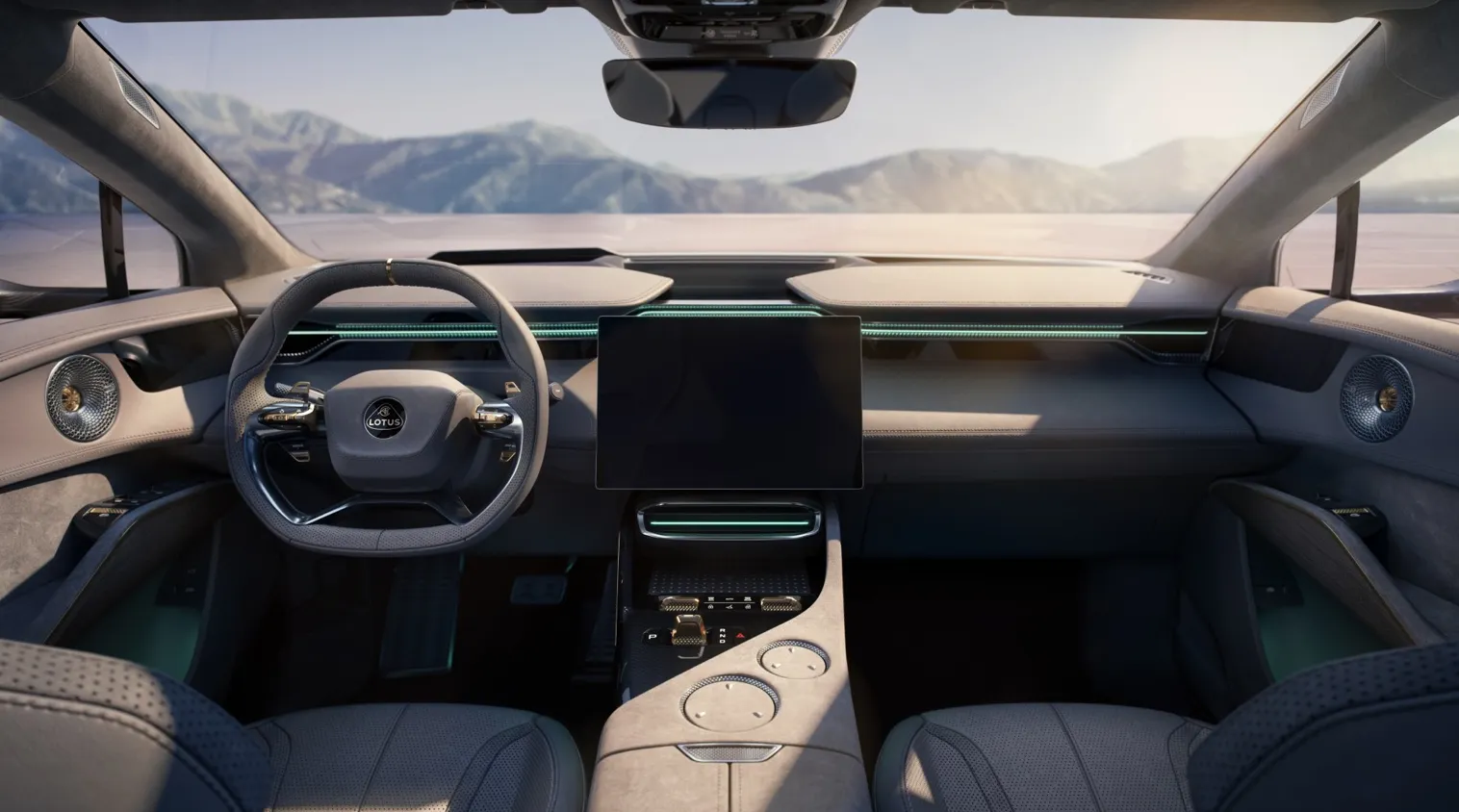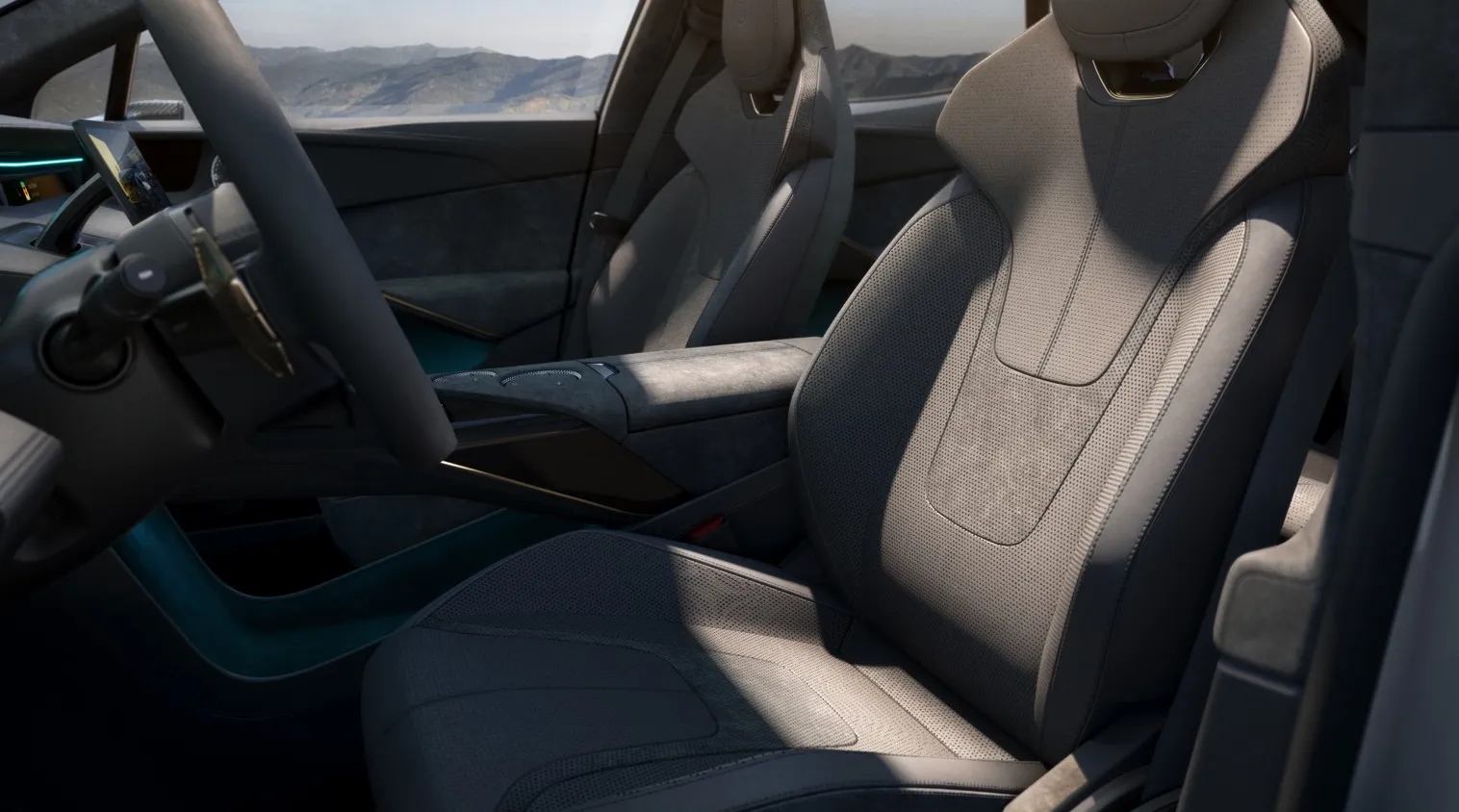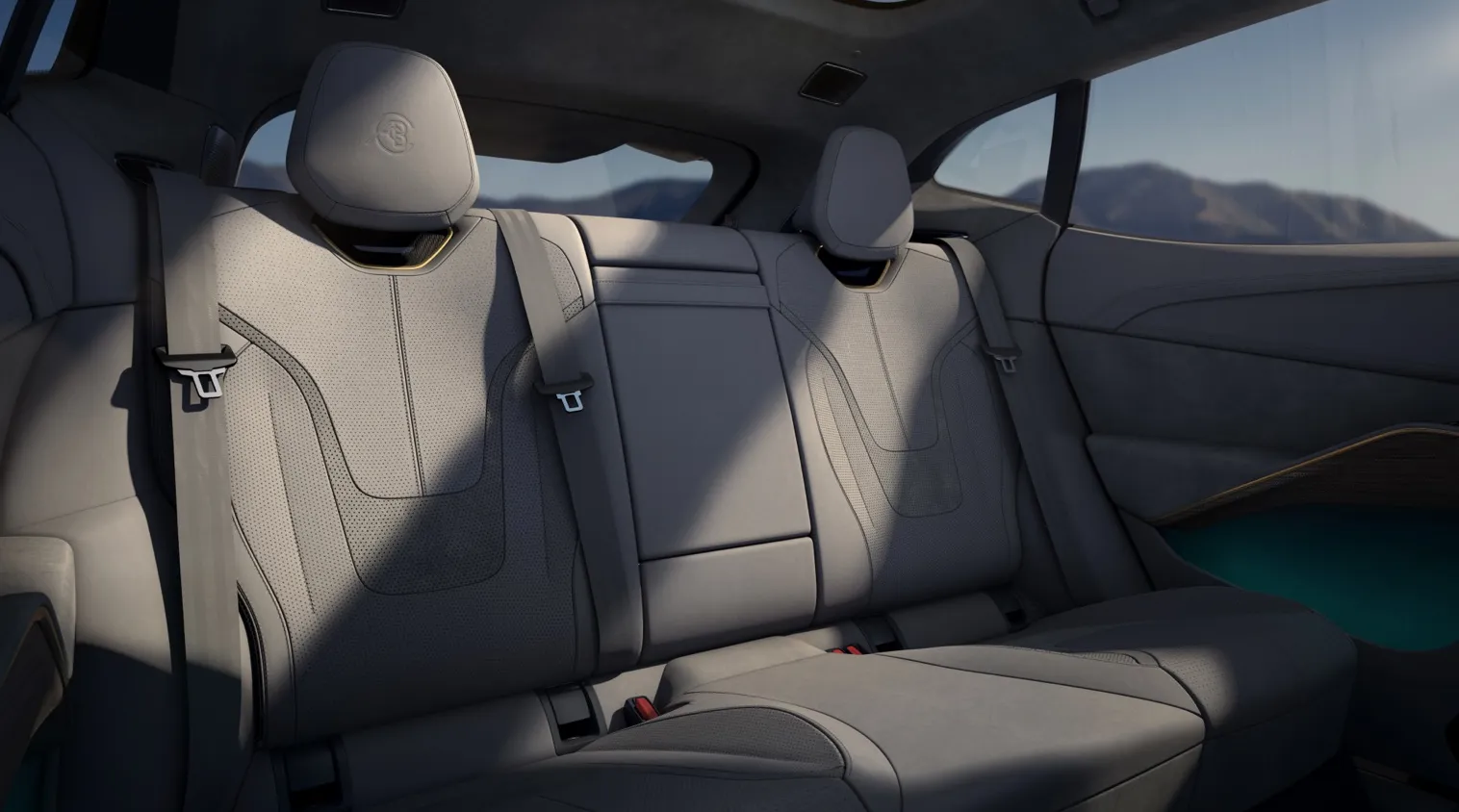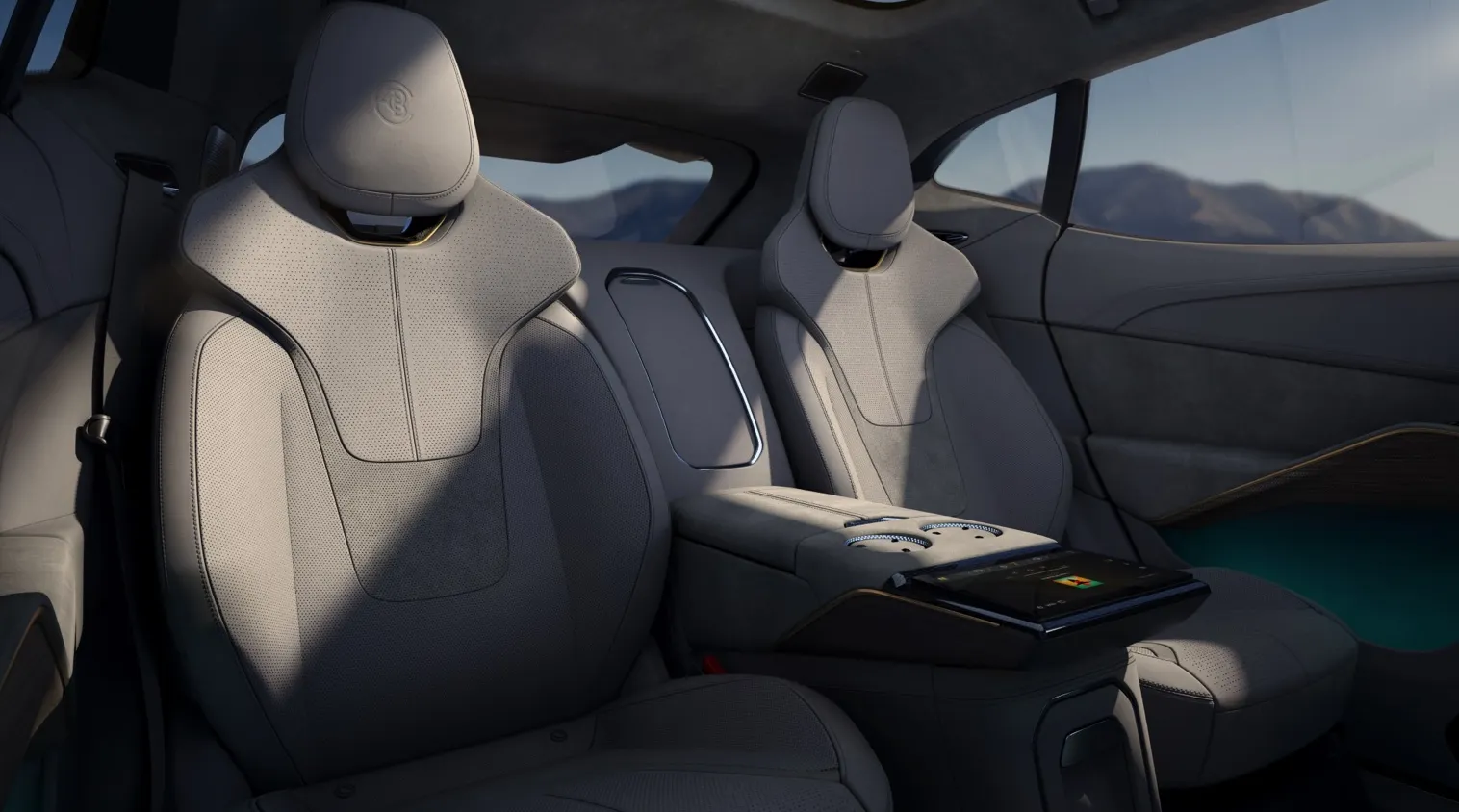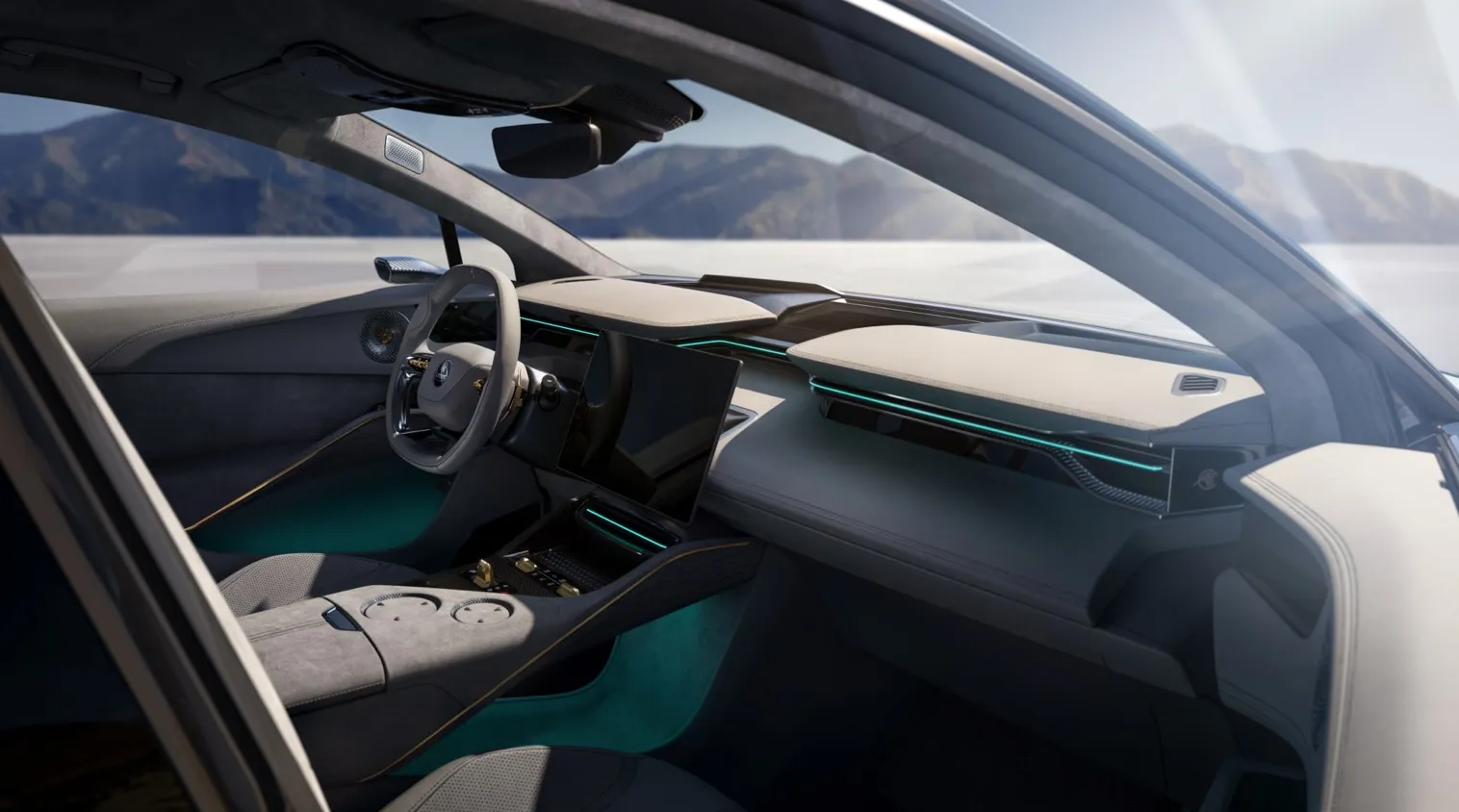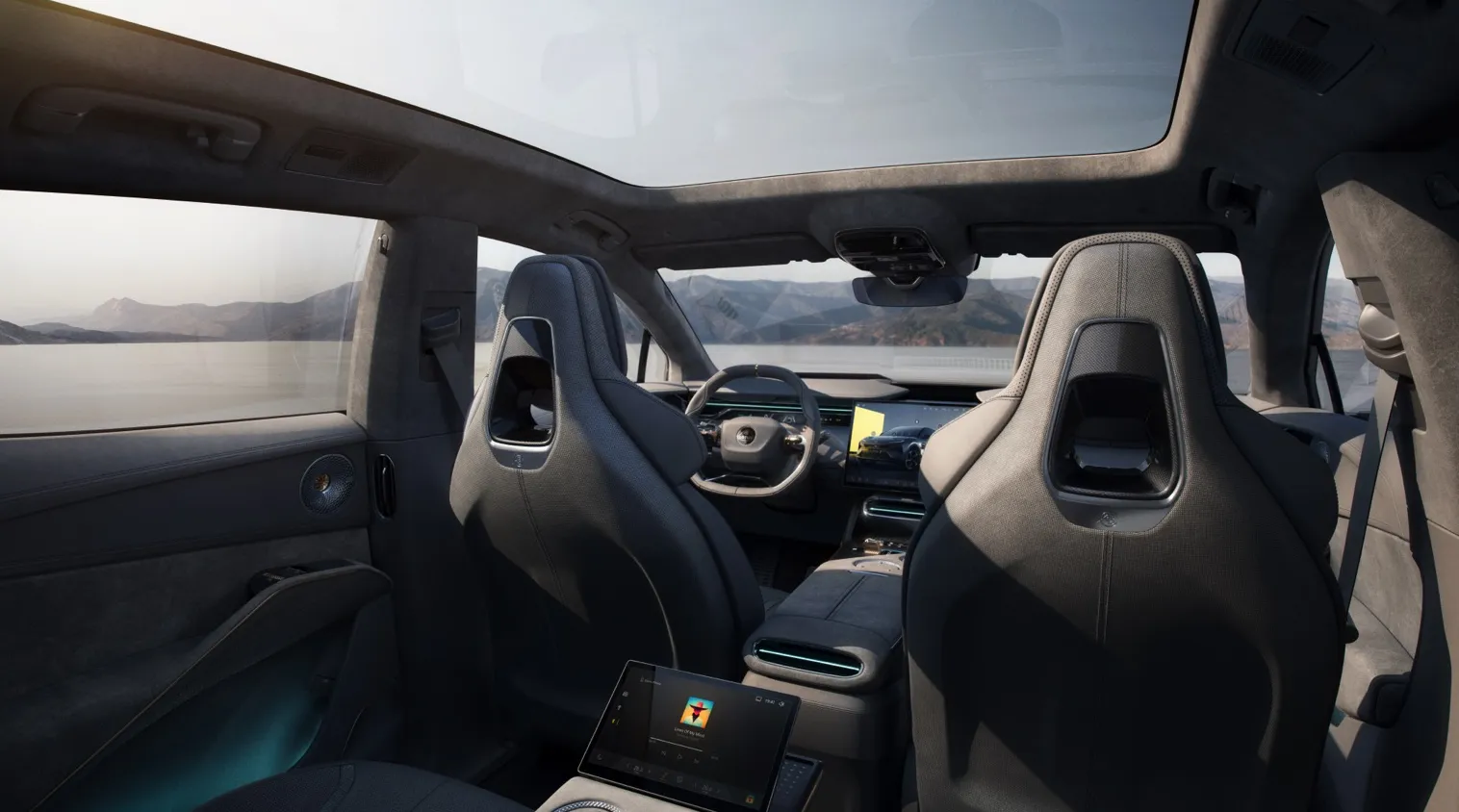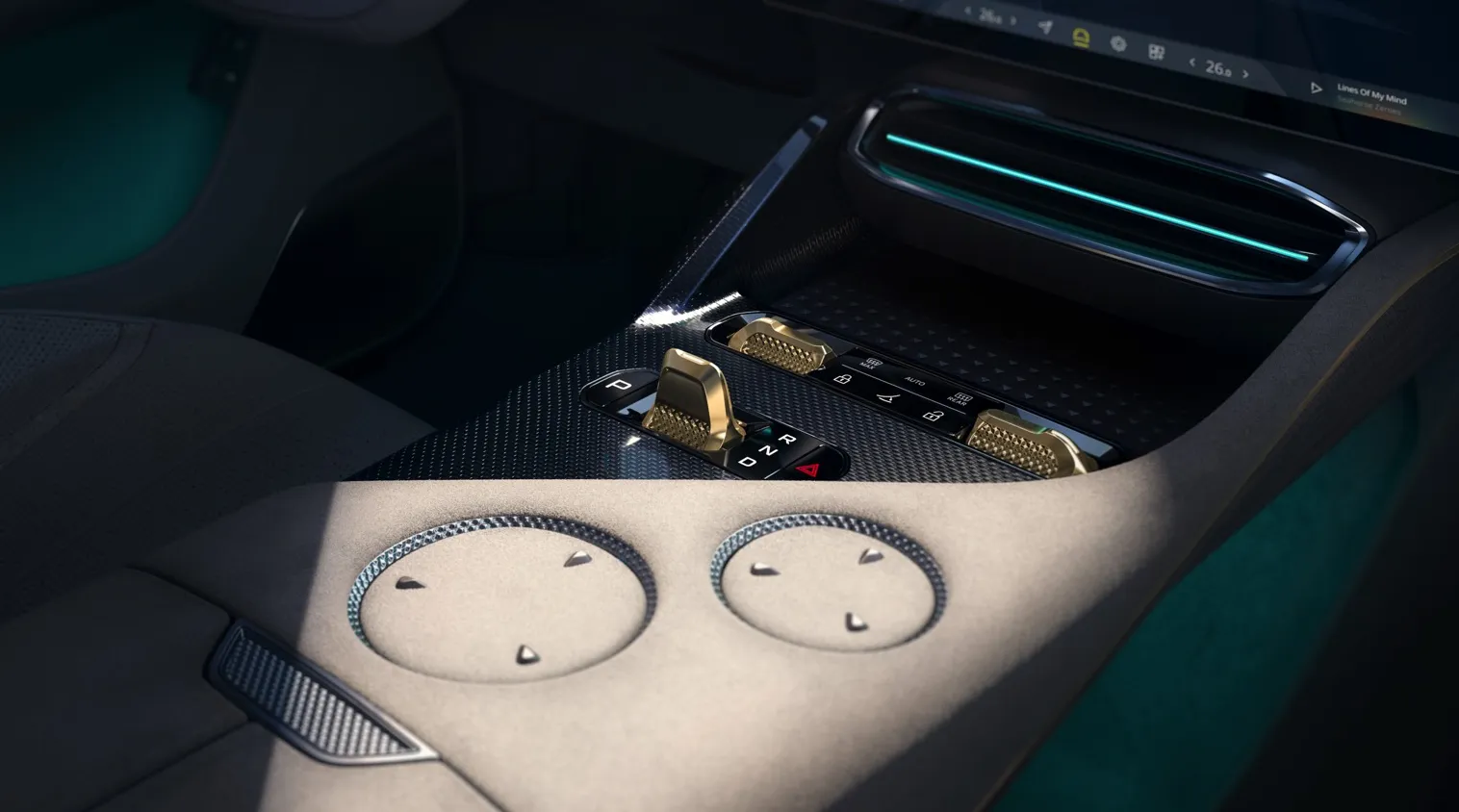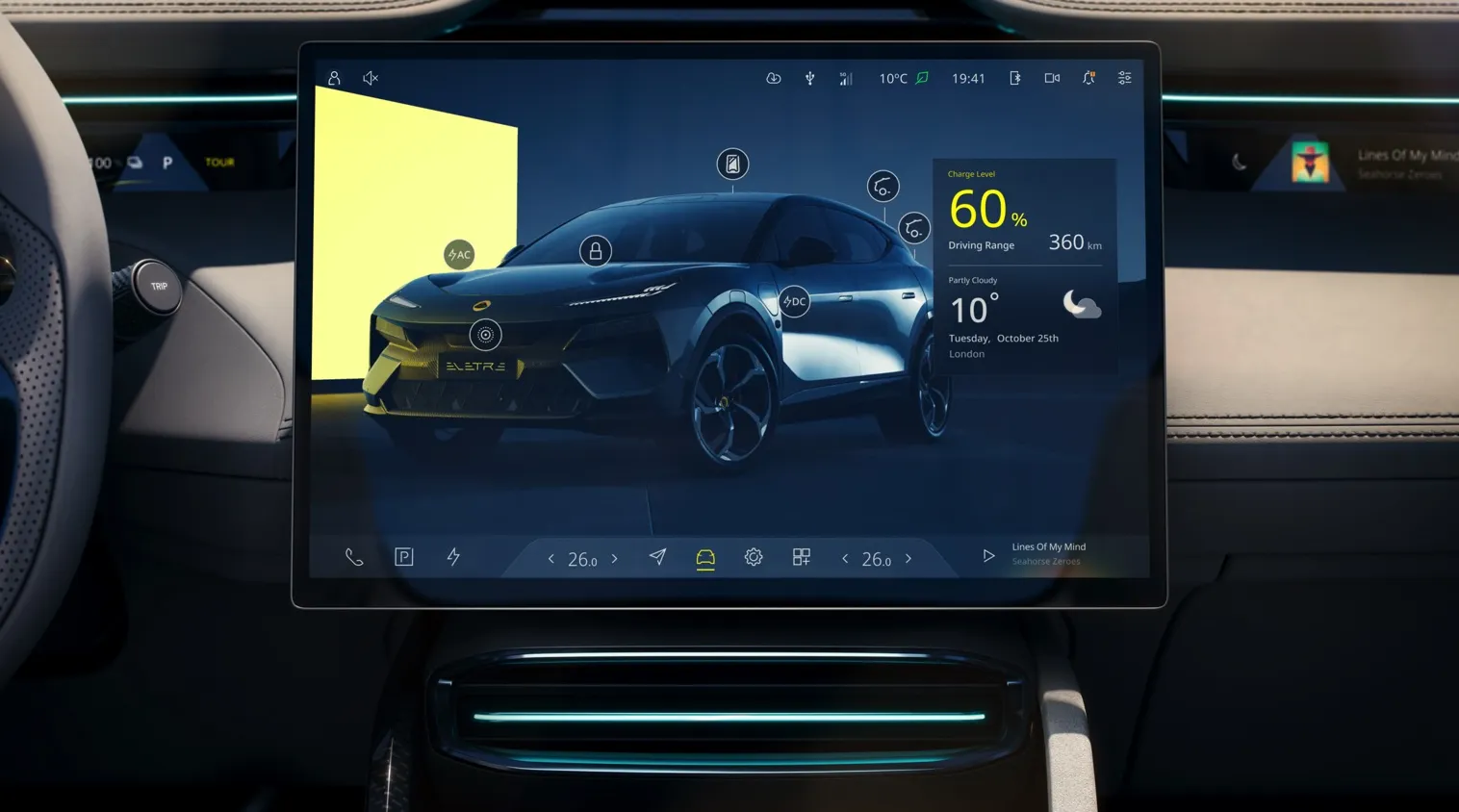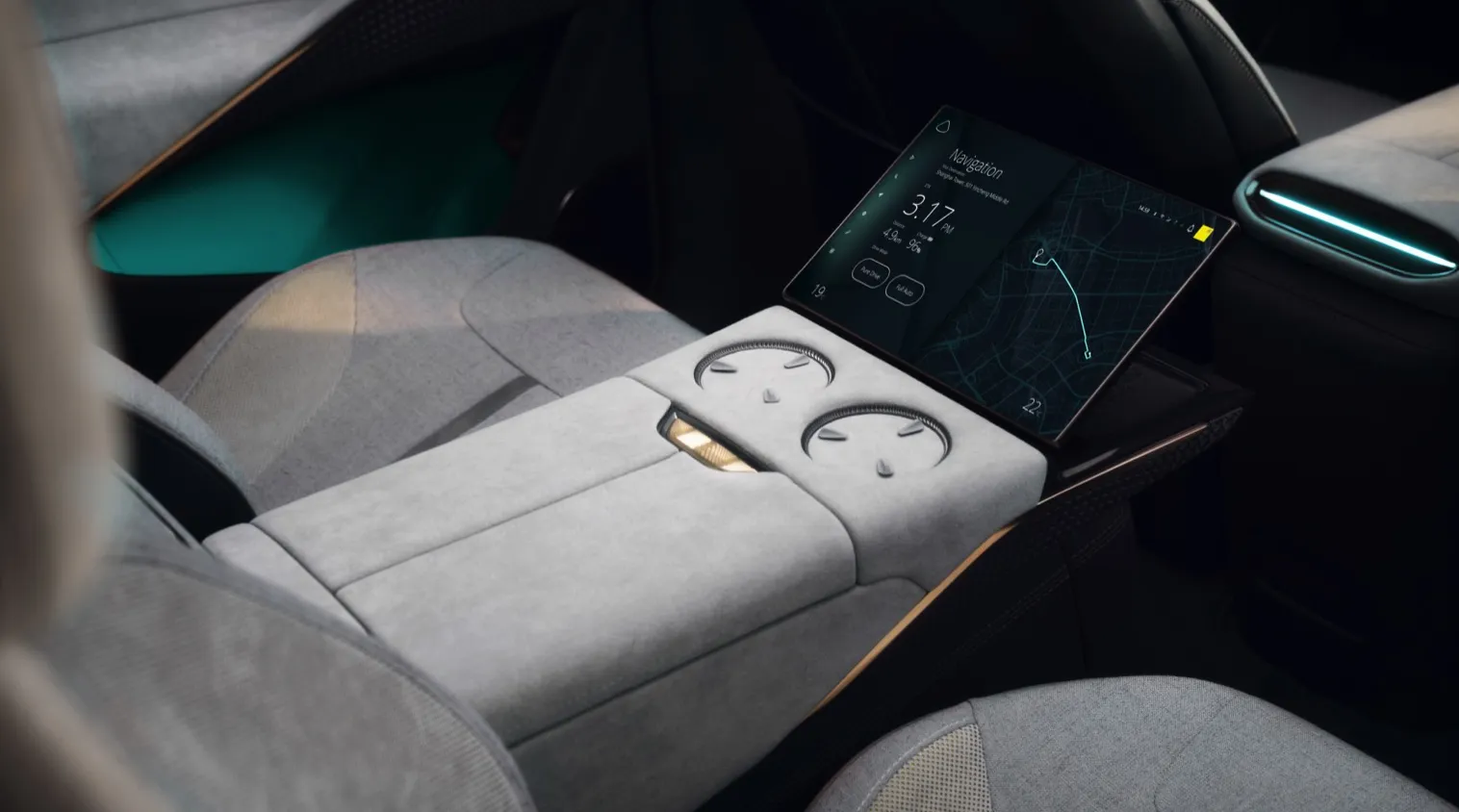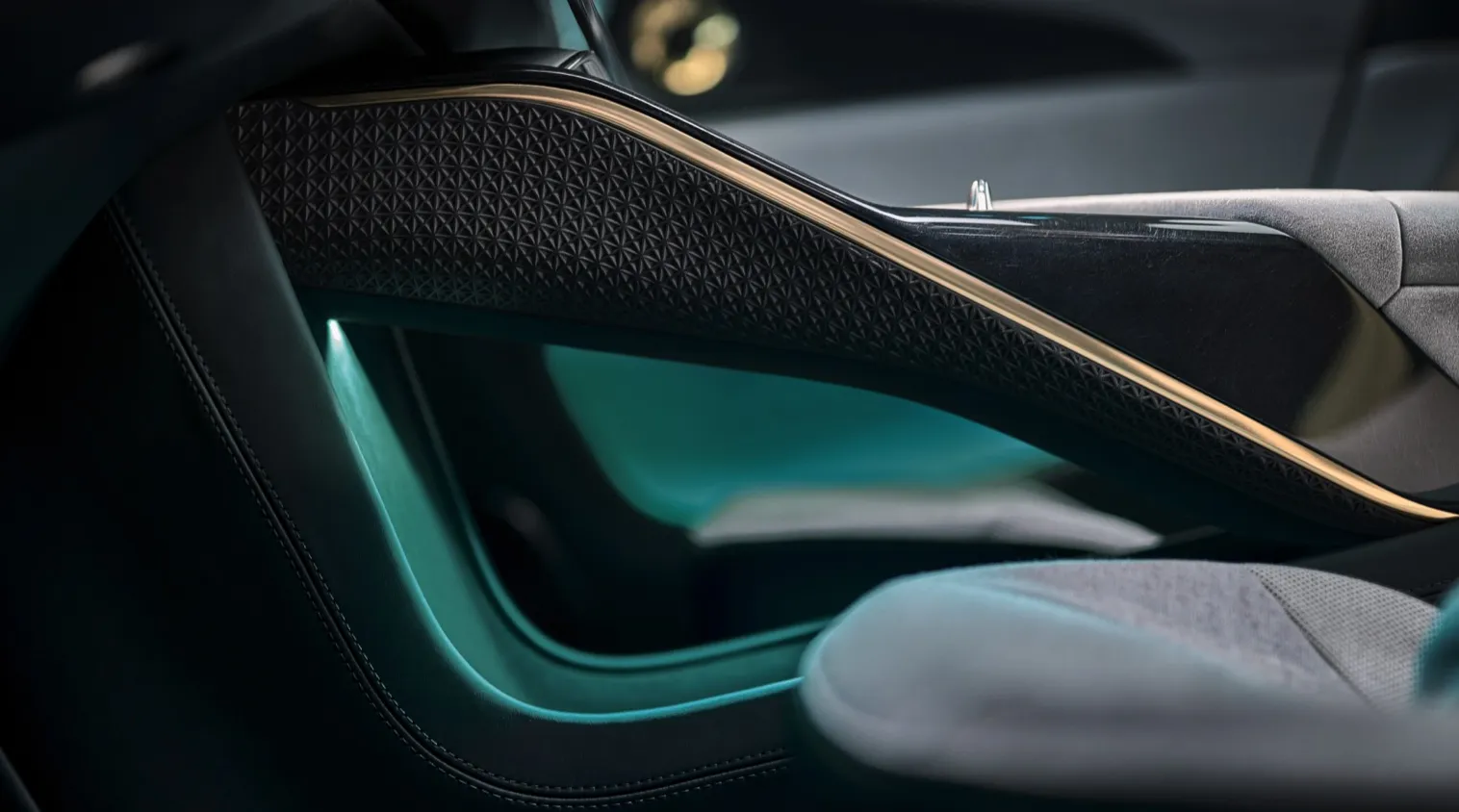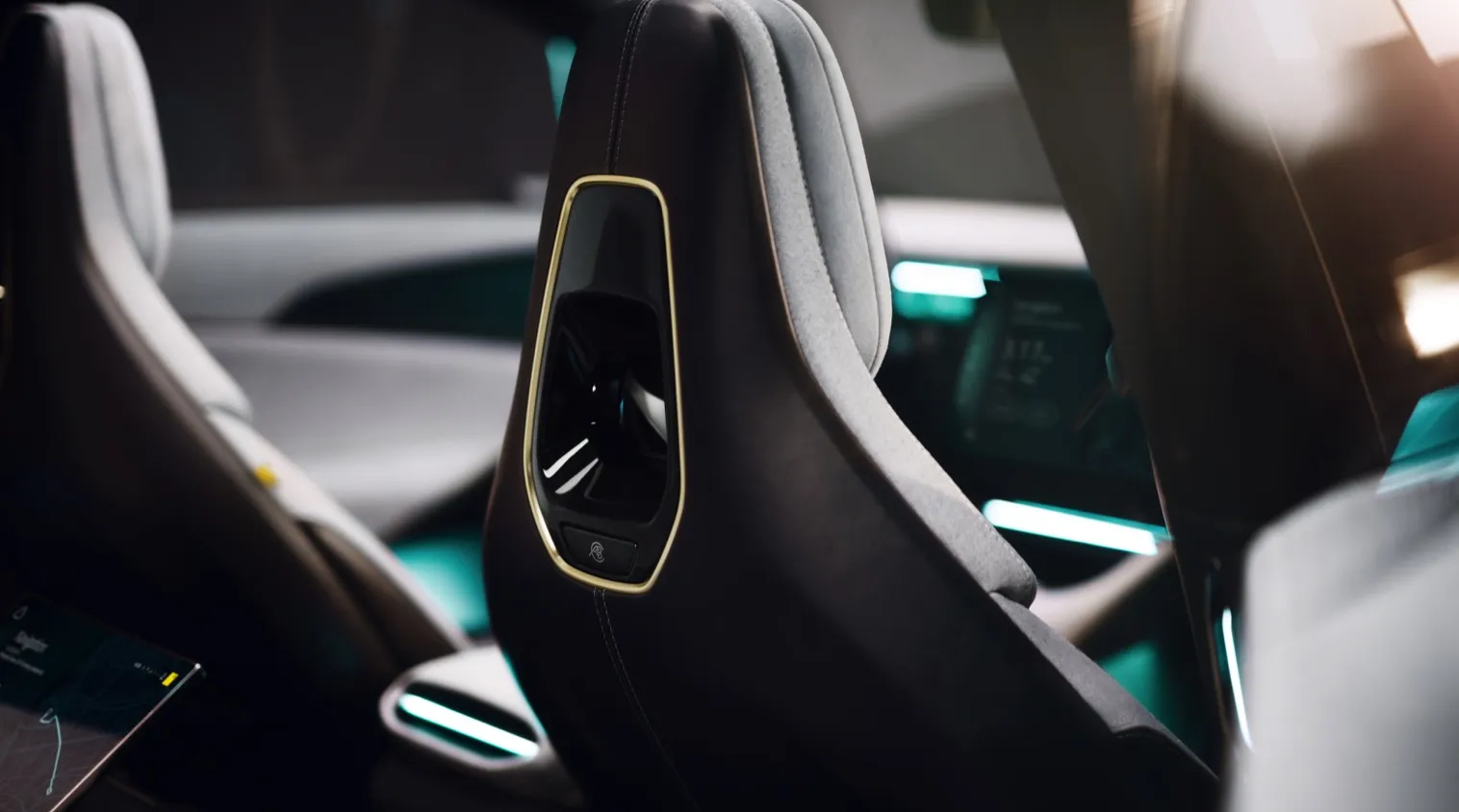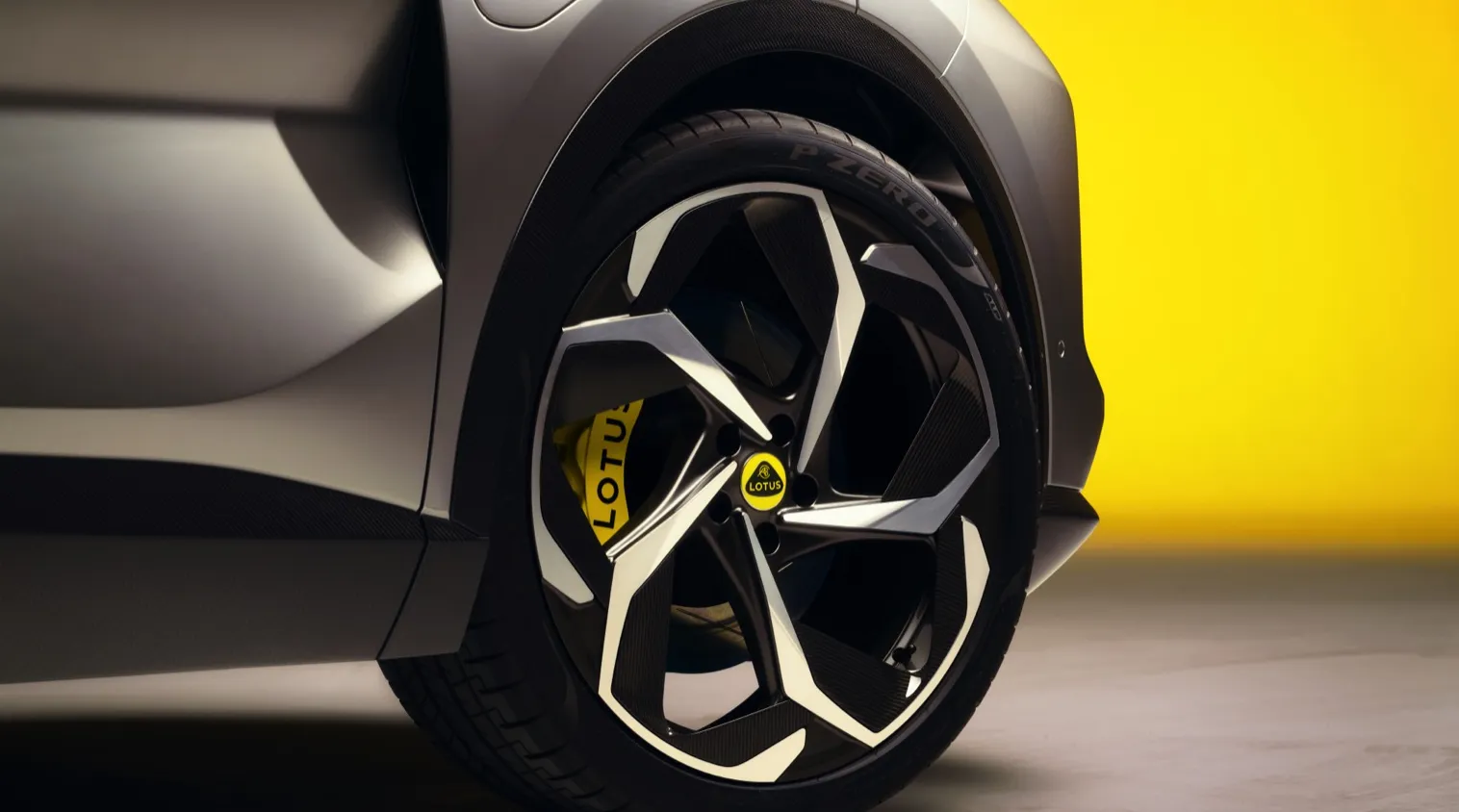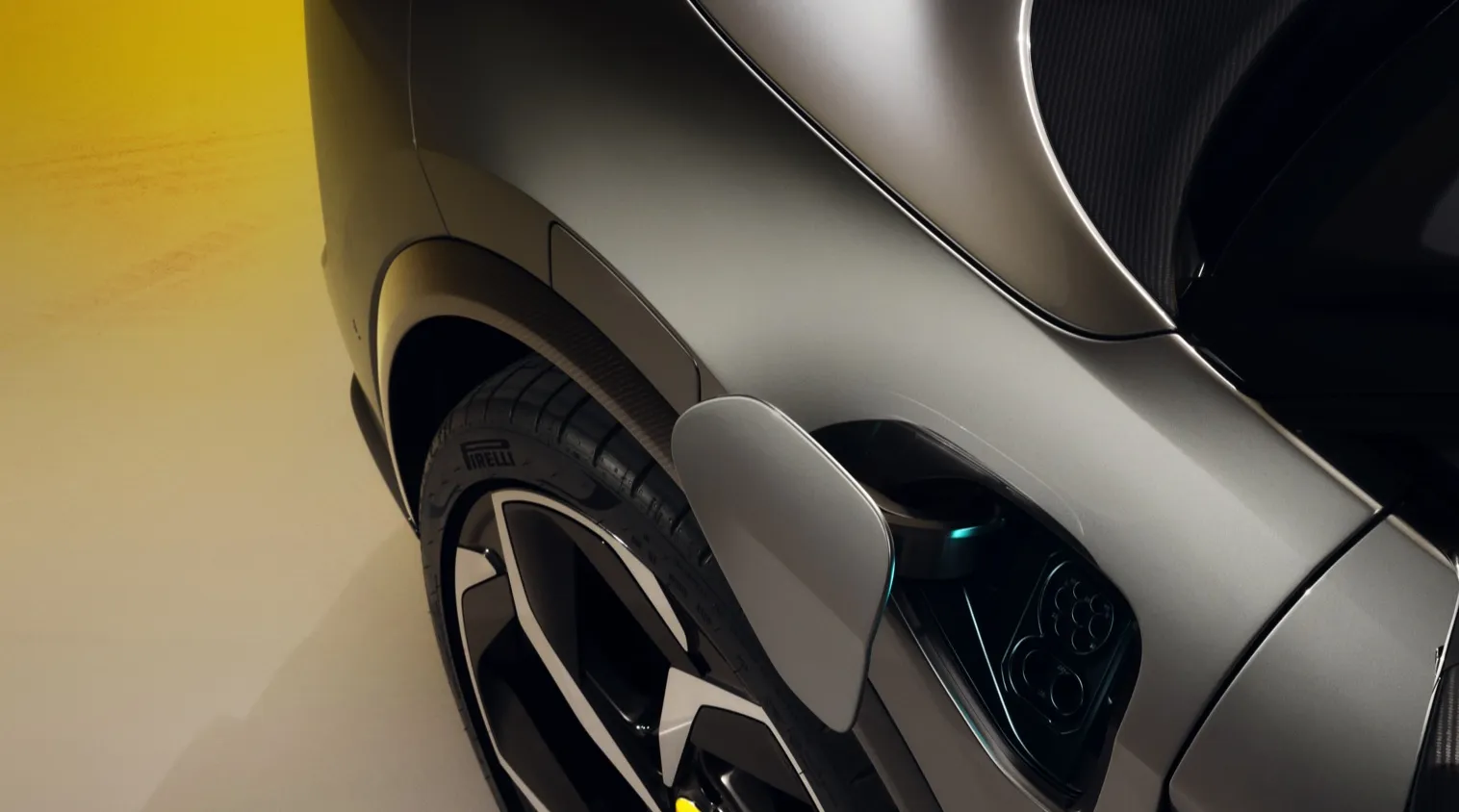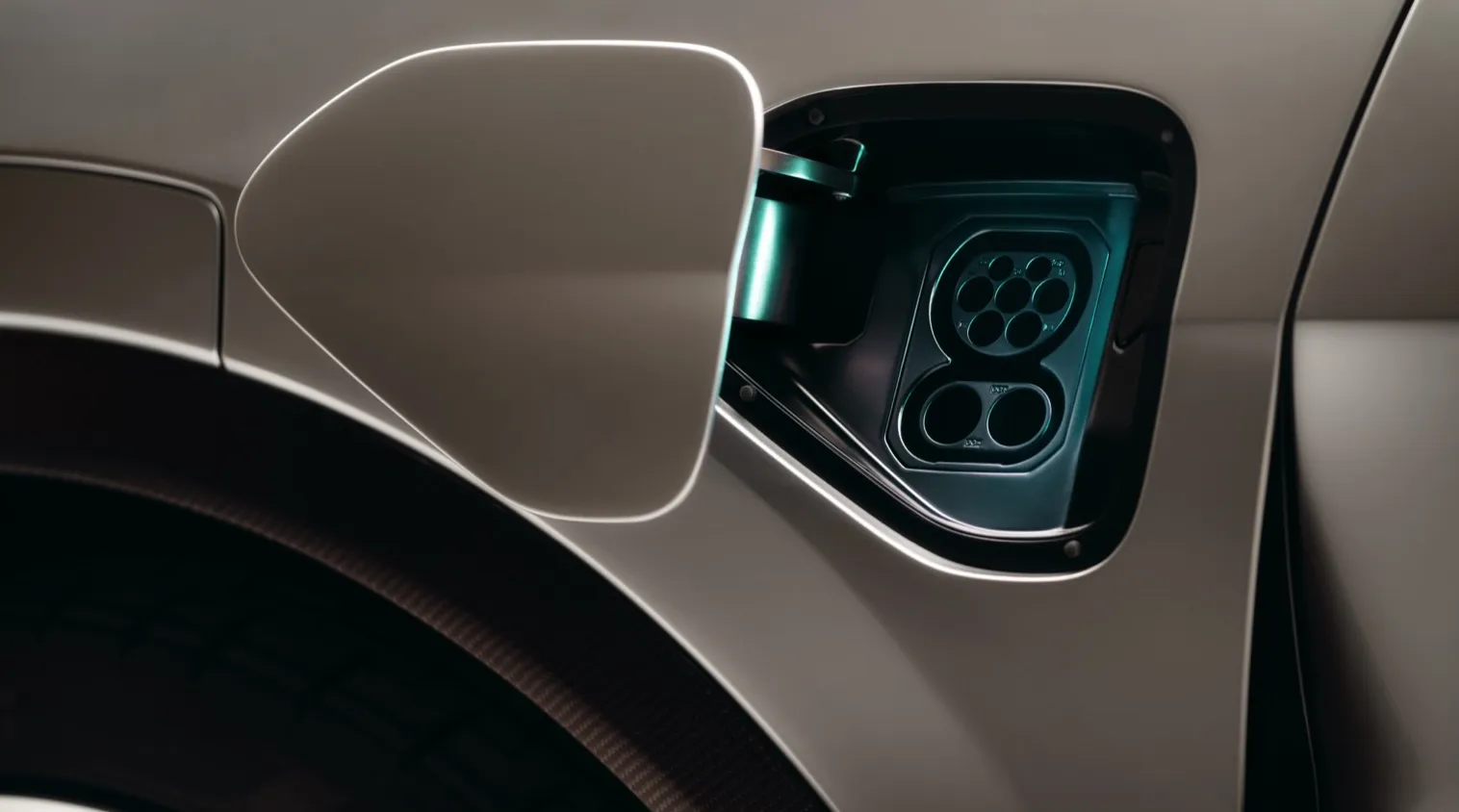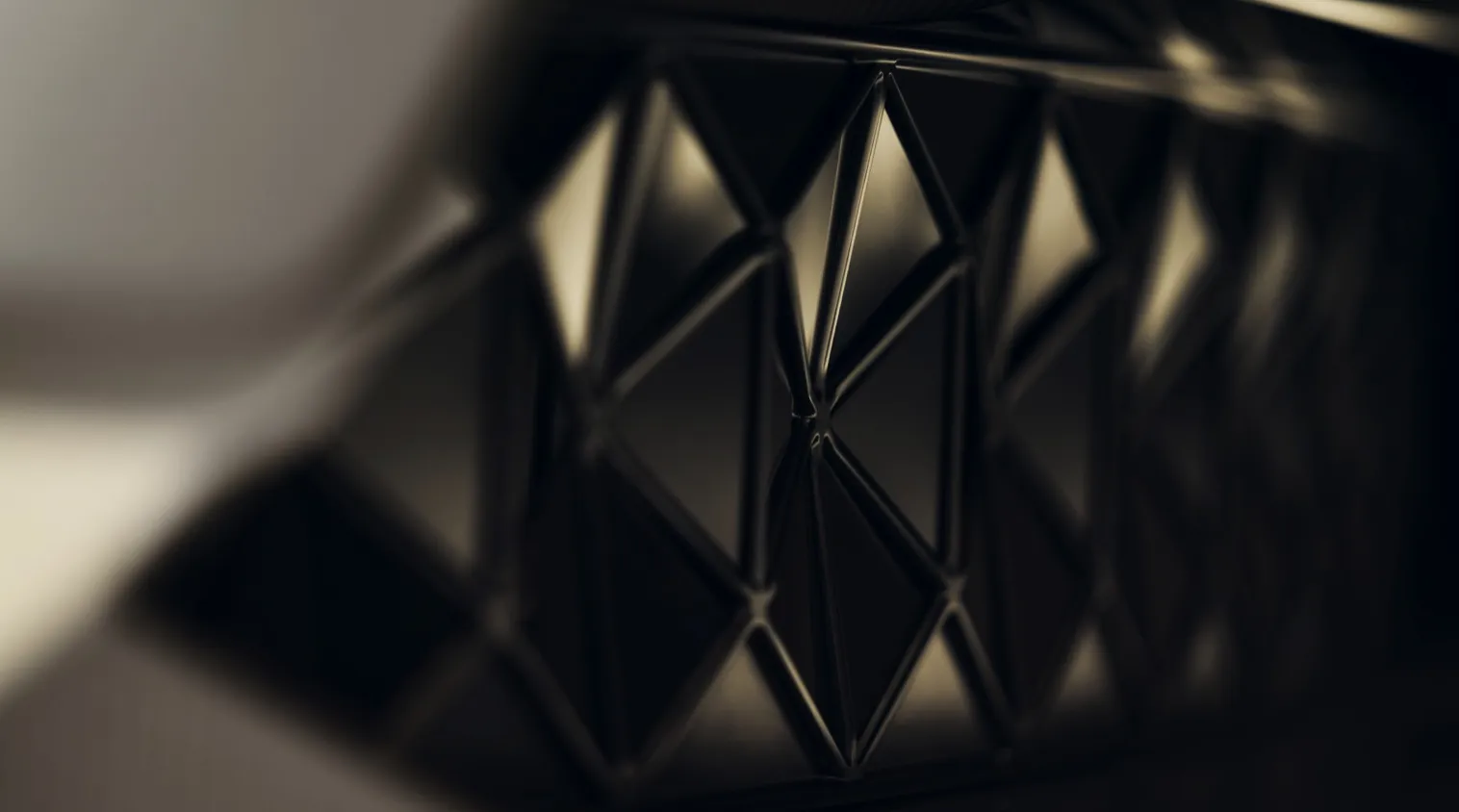Lotus Eletre S
Model: Lotus
- : 109.0 kWh
- : 480 km *
- : 227 Wh/km *
Real Range Estimation
| City - Cold Weather * | 485 km |
| Highway - Cold Weather * | 350 km |
| Combined - Cold Weather * | 415 km |
between 350 - 685 km
| City - Mild Weather * | 685 km |
| Highway - Mild Weather * | 440 km |
| Combined - Mild Weather * | 545 km |
Performance
| Acceleration 0 - 100 km/h | 4.5 sec |
| Top Speed | 250 km/h |
| Electric Range * | 480 km |
| Total Power | 450 kW (612 PS) |
| Total Torque | 710 Nm |
| Drive | AWD |
Battery
| Nominal Capacity | 111.9 kWh |
| Battery Type | Lithium-ion |
| Number of Cells | No Data |
| Architecture | 800 V |
| Warranty Period | 8 years |
| Warranty Mileage | 200,000 km |
| Useable Capacity | 109.0 kWh |
| Cathode Material | No Data |
| Pack Configuration | No Data |
| Nominal Voltage | 709 V |
| Form Factor | No Data |
| Name / Reference | No Data |
Bidirectional Charging (V2X / BPT)
Vehicle-to-Load (V2L)
| V2L Supported | No |
| Max. Output Power | - |
Vehicle-to-Home (V2H)
| V2H via AC Supported | No |
| Max. Output Power | - |
Vehicle-to-Grid (V2G)
| V2G via AC Supported | No |
| Max. Output Power | - |
Energy Consumption
EVDB Real Range
| Range * | 480 km |
| Vehicle Consumption * | 227 Wh/km |
WLTP Ratings (TEL)
| Range | 530 km |
| Rated Consumption | 241 Wh/km |
| Vehicle Consumption | 206 Wh/km |
WLTP Ratings (TEH)
| Range | 490 km |
| Rated Consumption | 255 Wh/km |
| Vehicle Consumption | 222 Wh/km |
Miscellaneous
| Seats | 5 people |
| Isofix | Yes, 2 seats |
| Turning Circle | 12 m |
| Platform | GEELY SEA-S |
| EV Dedicated Platform | Yes |
| Car Body | SUV |
| Segment | JF - Luxury |
| Roof Rails | No |
| Heat pump (HP) | Yes |
| HP Standard Equipment | Yes |
Home and Destination Charging (0 -> 100%)
Charging is possible by using a regular wall plug or a charging station. Public charging is always done through a charging station. How fast the EV can charge depends on the charging station (EVSE) used and the maximum charging capacity of the EV. The table below shows all possible options for charging the Lotus Eletre S. Each option shows how fast the battery can be charged from empty to full.
Europe
Charging an EV in Europe differs by country. Some European countries primarily use 1-phase connections to the grid, while other countries are almost exclusively using a 3-phase connection. The table below shows all possible ways the Lotus Eletre S can be charged, but some modes of charging might not be widely available in certain countries.
| Type 2 (Mennekes - IEC 62196) |
|---|
 |
| Charging Point | Max. Power | Power | Time | Rate |
|---|---|---|---|---|
| Wall Plug (2.3 kW) | 230V / 1x10A | 2.3 kW | 55h45m | 9 km/h |
| 1-phase 16A (3.7 kW) | 230V / 1x16A | 3.7 kW | 34h45m | 14 km/h |
| 1-phase 32A (7.4 kW) | 230V / 1x32A | 7.4 kW | 17h30m | 27 km/h |
| 3-phase 16A (11 kW) | 400V / 3x16A | 11 kW | 11h45m | 41 km/h |
| 3-phase 32A (22 kW) | 400V / 3x32A | 22 kW † | 6 hours | 80 km/h |
† = Limited by on-board charger, vehicle cannot charge faster.
Fast Charging (10 -> 80%)
Rapid charging enables longer journeys by adding as much range as possible in the shortest amount of time. Charging power will decrease significantly after 80% state-of-charge has been reached. A typical rapid charge therefore rarely exceeds 80% SoC. The rapid charge rate of an EV depends on the charger used and the maximum charging power the EV can handle. The table below shows all details for rapid charging the Lotus Eletre S.
- Max. Power: maximum power provided by charge point
- Avg. Power: average power provided by charge point over a session from 10% to 80%
- Time: time needed to charge from 10% to 80%
- Rate: average charging speed over a session from 10% to 80%
| Combined Charging System (CCS Combo 2) |
|---|
 |
| Charging Point | Max. Power | Avg. Power | Time | Rate |
|---|---|---|---|---|
| CCS (50 kW DC) | 50 kW | 50 kW | 96 min | 210 km/h |
| CCS (150 kW DC) | 150 kW | 150 kW | 32 min | 630 km/h |
| CCS (350 kW DC) | 367 kW | 259 kW † | 19 min | 1060 km/h |
| Charge Curve |
|---|
 |
Data made available by Fastned |
| This vehicle supports Autocharge |
|---|
| This vehicle does not support Plug & Charge |
† = Limited by charging capabilities of vehicle
Autocharge: allows for automatic initiation of a charging session at supported CCS charging stations.
Plug & Charge: allows for automatic initiation of a charging session at supported CCS charging stations in accordance with ISO 15118.
Actual charging rates may differ from data shown due to factors like outside temperature, state of the battery and driving style.
Lotus Claimed Specifications
The table below shows the claimed specifications from the manufacturer for charging the Lotus Eletre S. The specifications can differ from the table above for a variety of reasons. If real-world charge tests are available, these differences can be signifcant. If no real-world tests are available, the table above will be based on the manufacturer specifications as per the table below.
- Max. Power: maximum charge power during charging session
- Charge From: battery percentage (% SoC) where charging session is started
- Charge To: battery percentage (% SoC) where charging session is ended
- Time: time needed for charging session
| Lotus Claimed Specifications |
|---|
| Max. Power | Charge From | Charge To | Time |
|---|---|---|---|
| 350 kW | 10 % | 80 % | 20 min |

